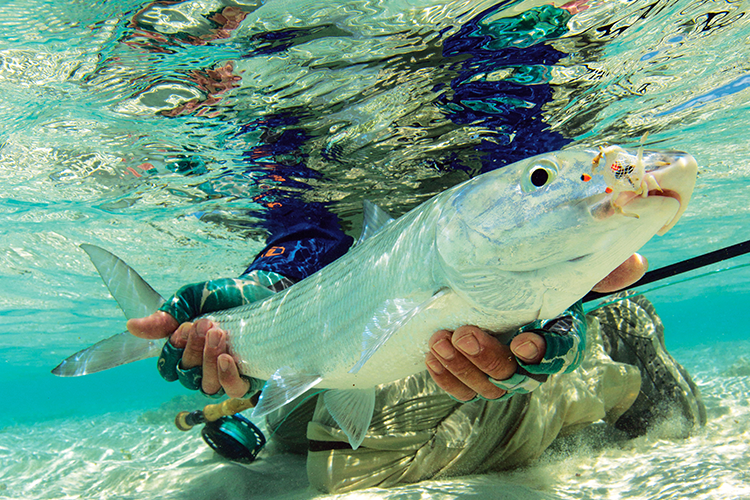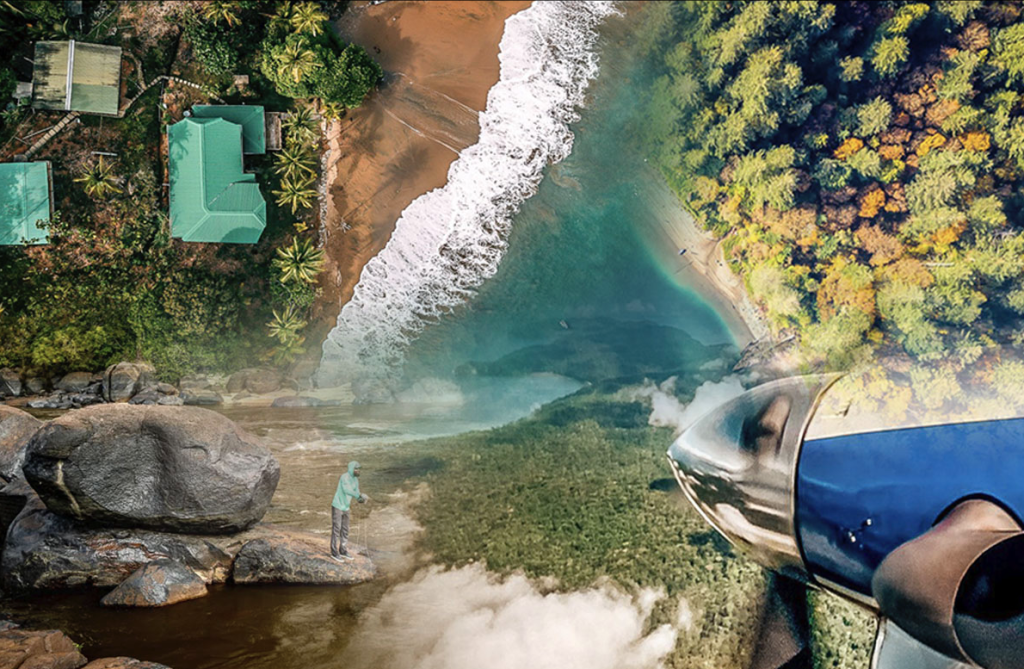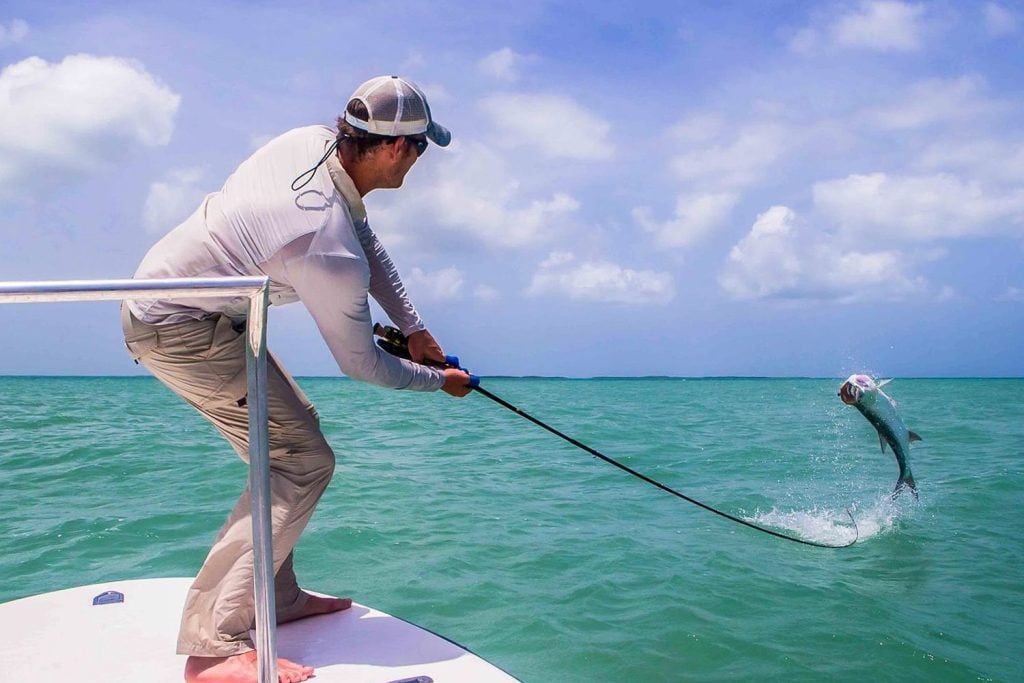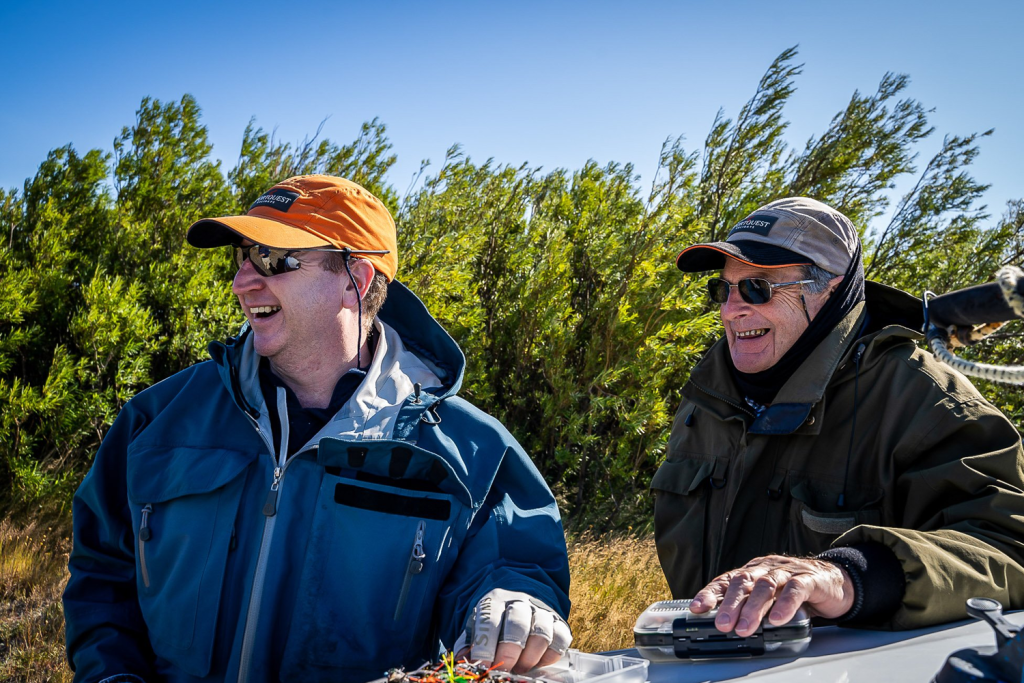When it comes to fishing locations for Bonefish, it can be frustratingly hard to even spot them gliding through the water let alone getting them to inhale your fly which is why Bonefish tips are a must. These fish are so difficult to spot and land they have even been nicknamed the “ghosts of the flats.” Here we have compiled a list of Bonefish tips and information to improve your chances of spotting and landing these silver scaled swimmers.
Bonefish Tips – Get to know your target
Bonefish are pound-for-pound one of the strongest, fastest-running saltwater fish that you will ever encounter with a fly rod anywhere. But did you know their scientific name is Albulidae, which means “white fox”, a great name for a species of fish that can move around on the flats and, due to its colouration and reflectiveness of its scales, extremely difficult to spot to the untrained eyes.
A classic pelagic species, Bonefish forage across sandy flats, rooting out worms, crustaceans, and mollusks buried beneath the surface. Their mouths are equipped with granular teeth and specialized dental plates, while similar grinders in the throat help crush and swallow prey with ease. Smaller and mid-sized fish often gather in schools, moving together as they feed, though their lives are never free of danger. Constantly hunted by sharks and barracuda, Bonefish have evolved into lightning-fast escape artists, capable of blistering bursts of over 30 miles per hour. Hooking into one on the fly means connecting with pure speed and adrenaline, an experience that keeps saltwater anglers coming back to the flats year after year. If anglers are looking for places to target specimen Bonefish, our trips to St. Brandon’s are the ultimate experience. This remote atoll is home to some of the largest and most plentiful bonefish in the world, offering anglers the rare opportunity to sight-fish for trophy-sized specimens in crystal-clear waters.
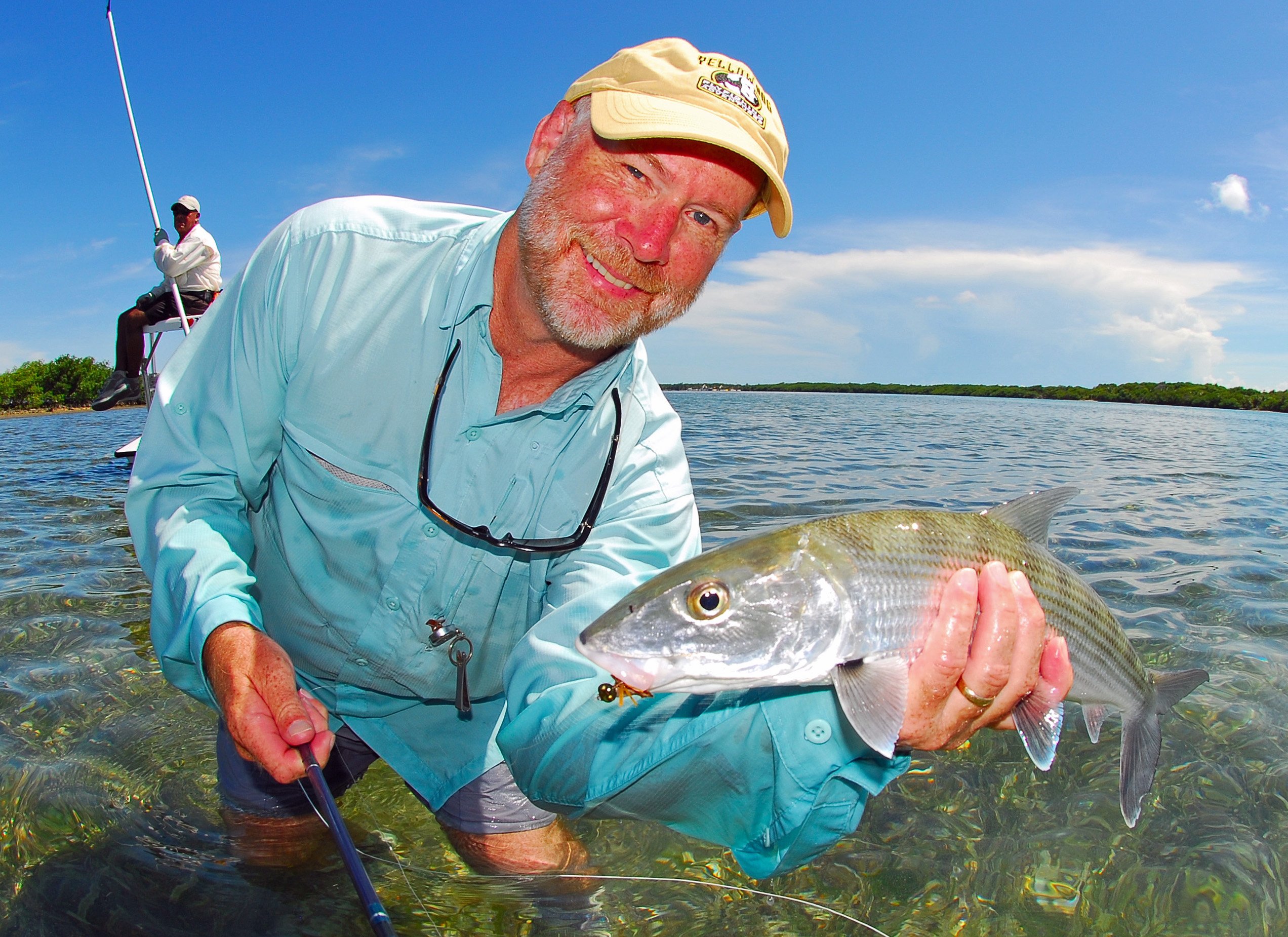

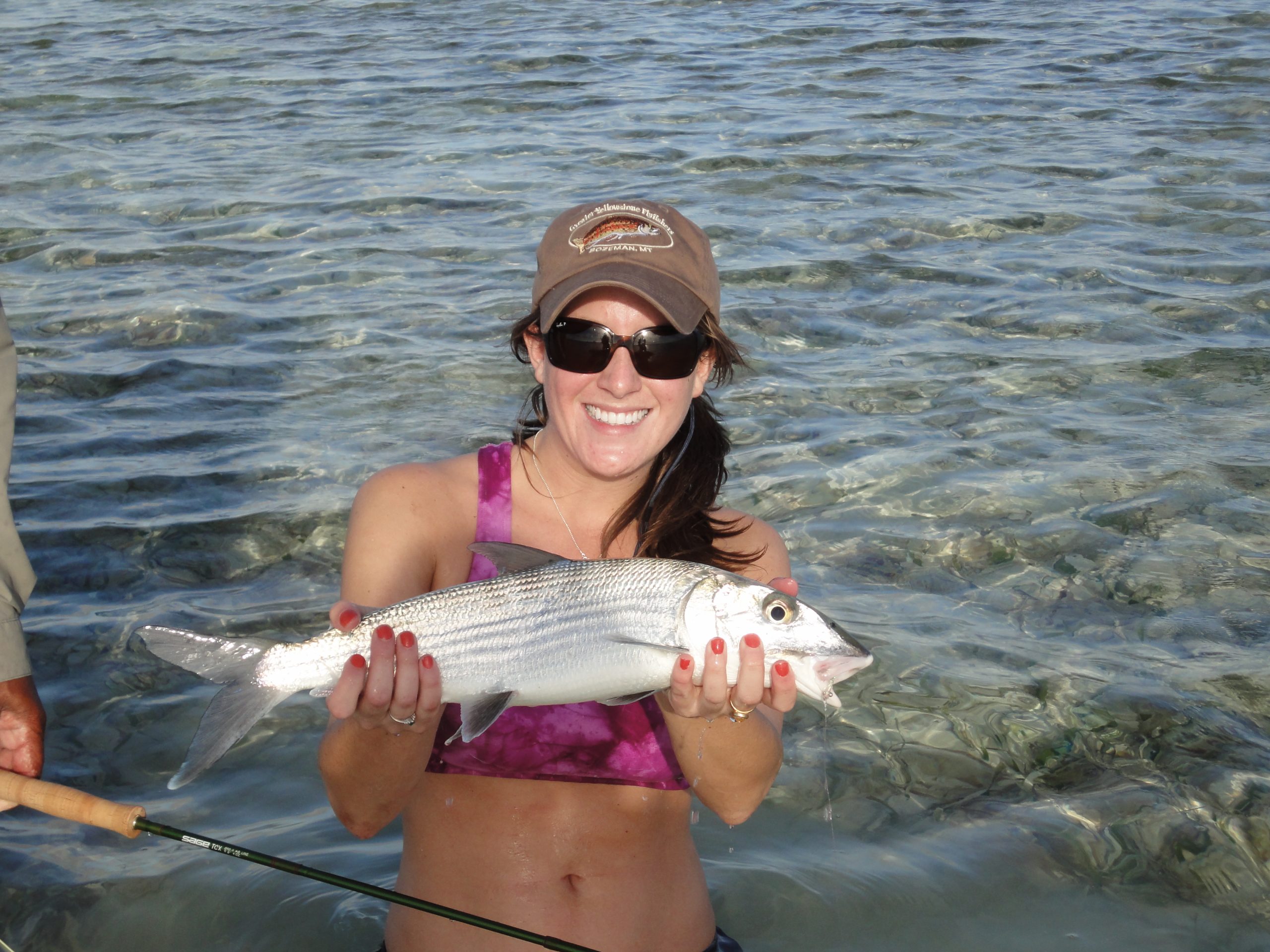

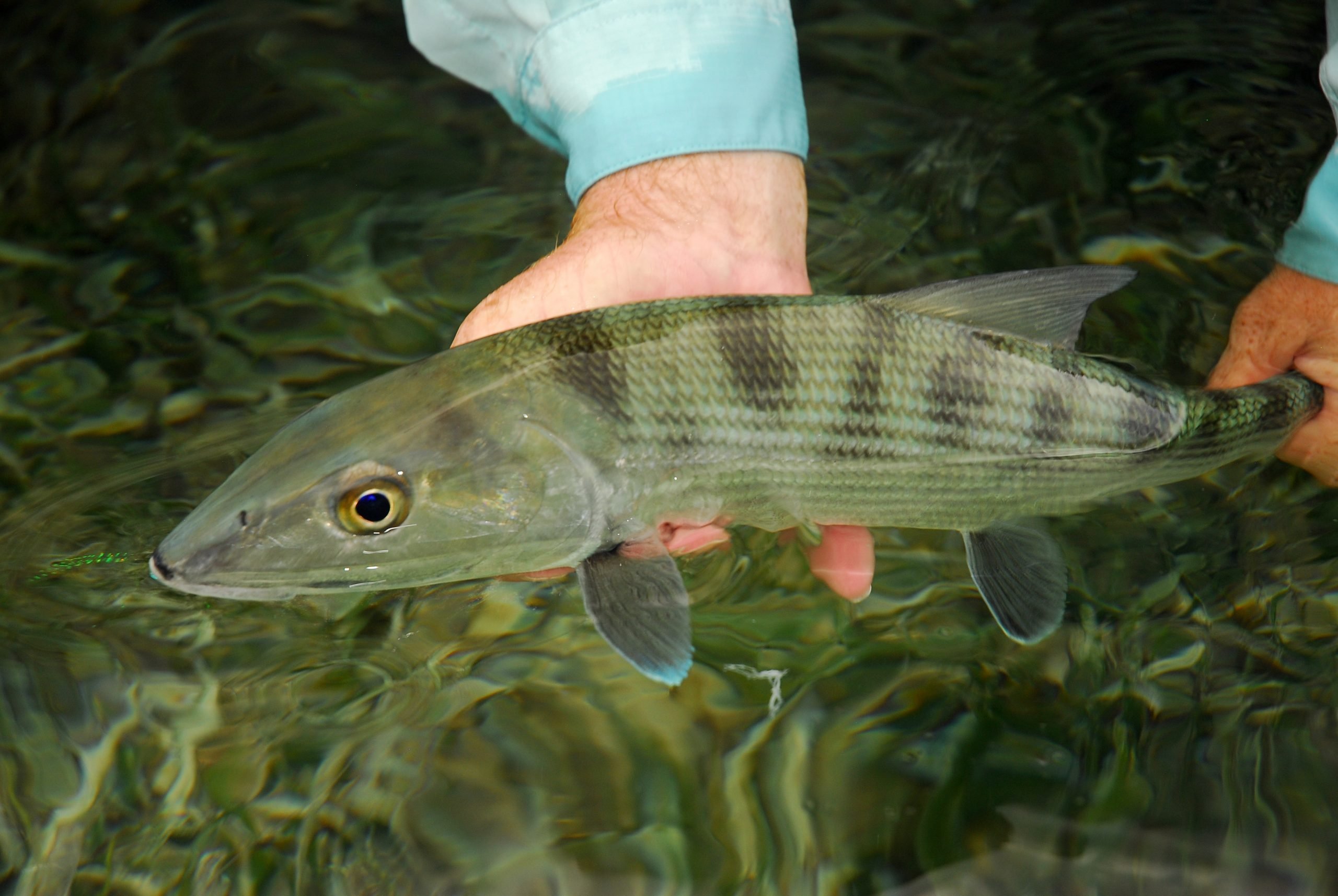

Bonefish are famed for riding the tides, pushing from deeper water onto the shallow flats to feed. On an incoming tide, anglers can spot and cast to tailing fish, arguably one of the most challenging and rewarding experiences in all of saltwater fly fishing. As the tide falls, the fish retreat once more to the safety of deeper channels.
Preferring warm, shallow environments, Bonefish thrive in tidal estuaries, protected bays, turtle grass flats, and brackish lagoons, usually in depths of just 2 to 6 feet. They’re found worldwide in subtropical seas, from California down to Peru in the Eastern Pacific, and from North Carolina through Florida, the Bahamas, the Caribbean, and nearly to Brazil in the Western Atlantic. While Bonefish can exceed 10lb, most average closer to 3–4lb. True trophies over 10lb are rare, often solitary or travelling in pairs, and represent the fish of a lifetime for any saltwater angler.
Bonefish Tips – What tackle should you use?
The single most important Bonefish tip is to travel with the right tackle. These fish demand accuracy, and the conditions on the flats can change quickly. A 9-foot, 8-weight fly rod is considered the universal choice for Bonefish, offering the ideal balance of power and presentation. In most destinations, rods in the 6–9 weight range with medium to fast action will give you enough backbone to drive flies accurately across, and often into, the prevailing ocean winds.
Lighter setups shine when the air is still, allowing for more delicate presentations to wary, tailing fish. On windier days, heavier rods and higher line speeds are essential to punch flies through and reach your target. Matching your gear to the conditions not only makes casting more effective but also ensures you’re ready for the explosive runs that make Bonefish such a celebrated flats species.
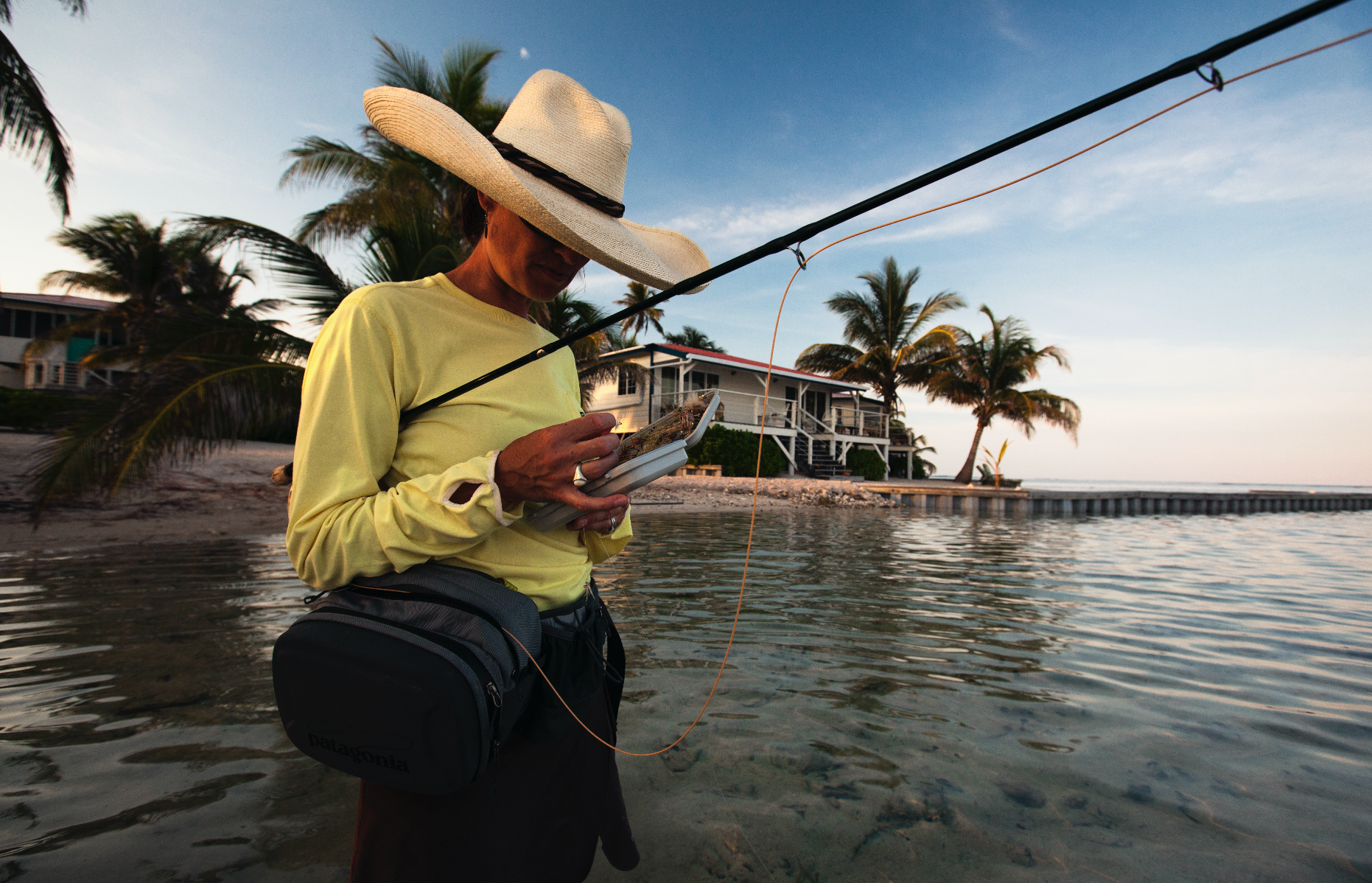

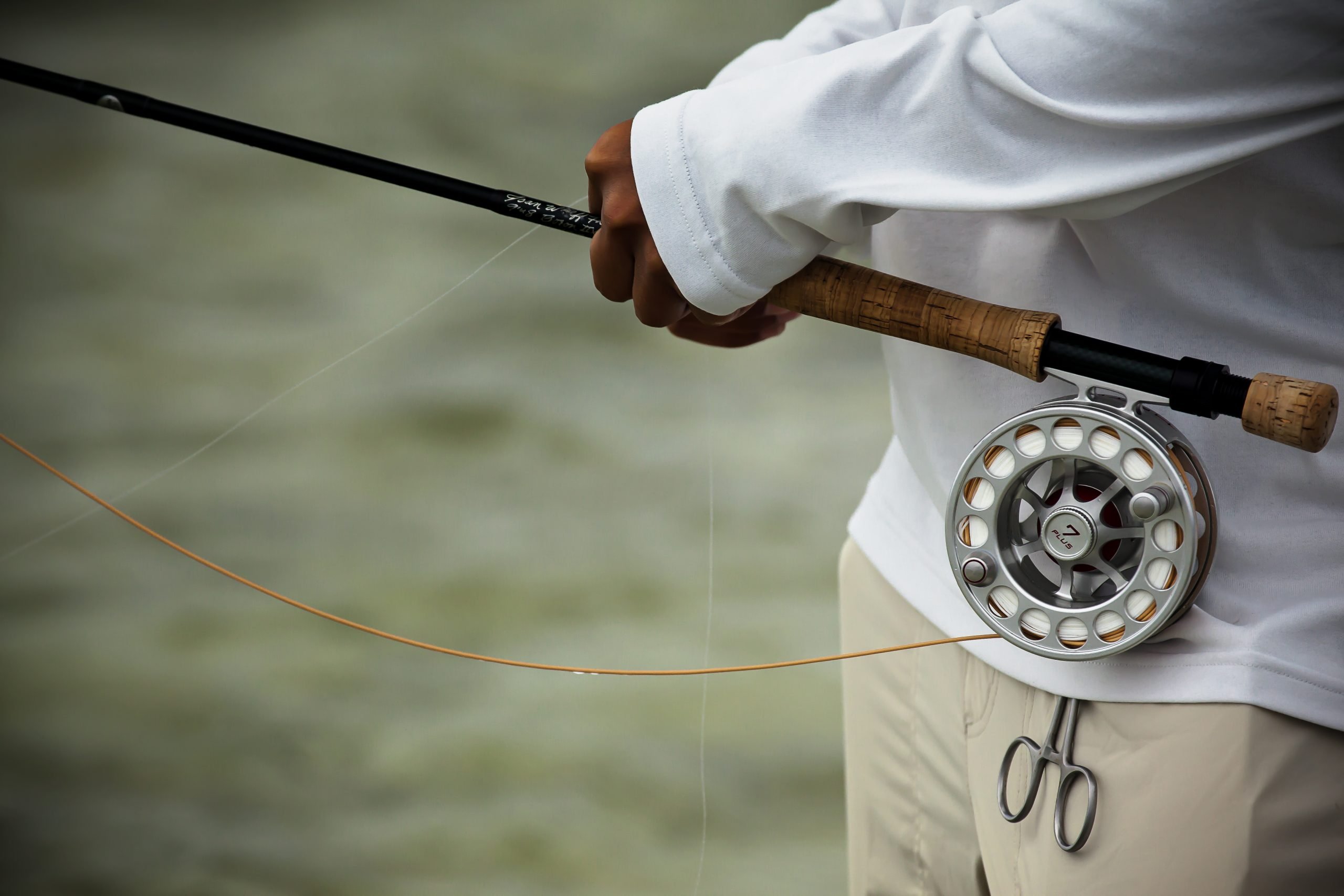

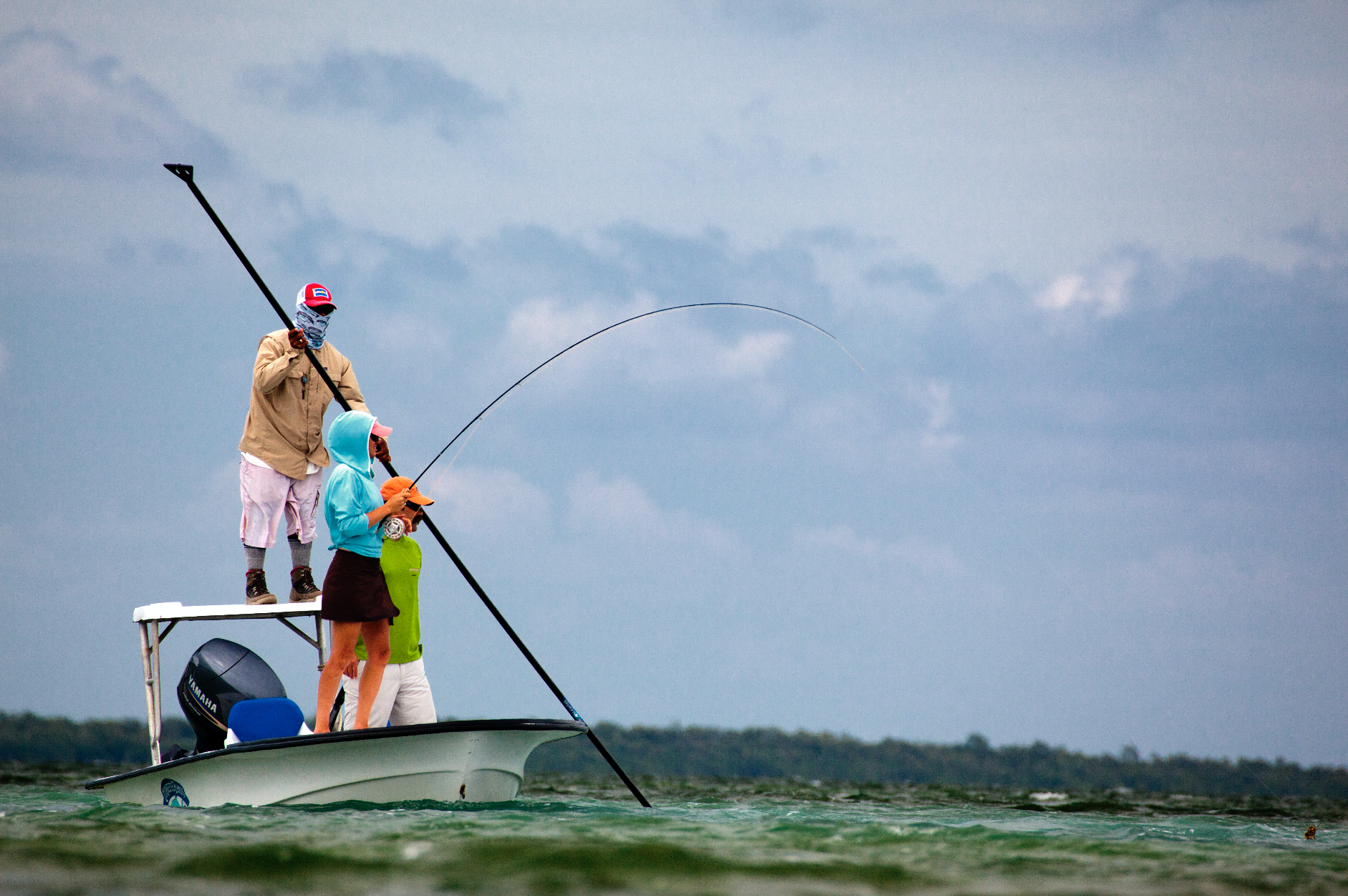

For Bonefish, investing in the right kit makes all the difference. A saltwater-specific rod from a trusted manufacturer is a must, but don’t overlook your reel. Choose a model with a smooth, adjustable cork or composite disc drag and enough capacity for at least 150 yards of 20–30lb backing — these fish run hard, and you’ll need it.
Pair this with a weight-forward floating line from brands like RIO or Airflo, matched to fluorocarbon leaders in the 10–16lb range, and you’ll be ready for almost any flat. Just as crucial are your sunglasses. Quality polarised lenses, designed specifically for saltwater flats, can be the difference between spotting tailing fish in time and missing them completely. Sight-fishing for Bonefish is all about vision, and having the right eyewear ensures you’re part of the hunt from the very first cast.
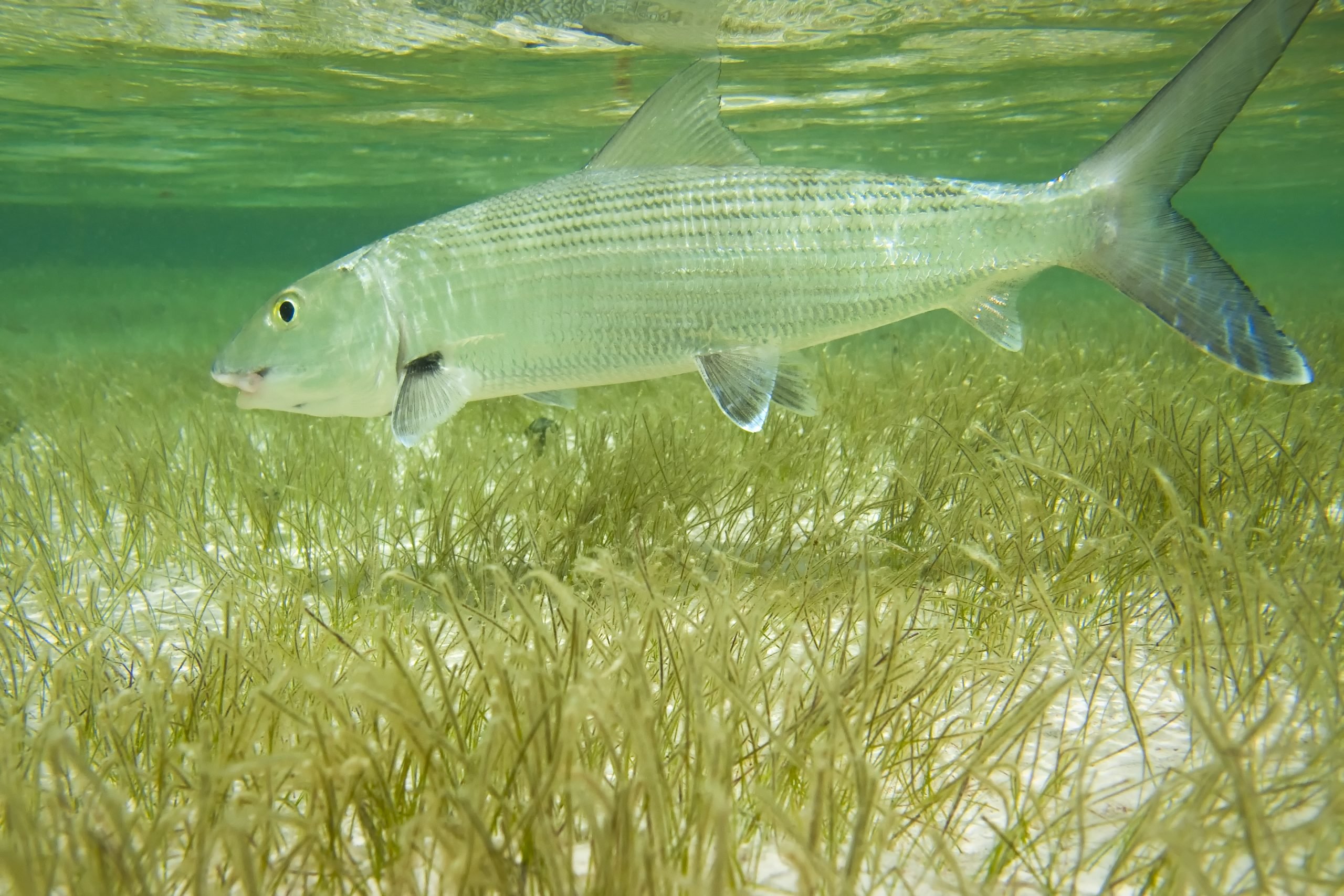

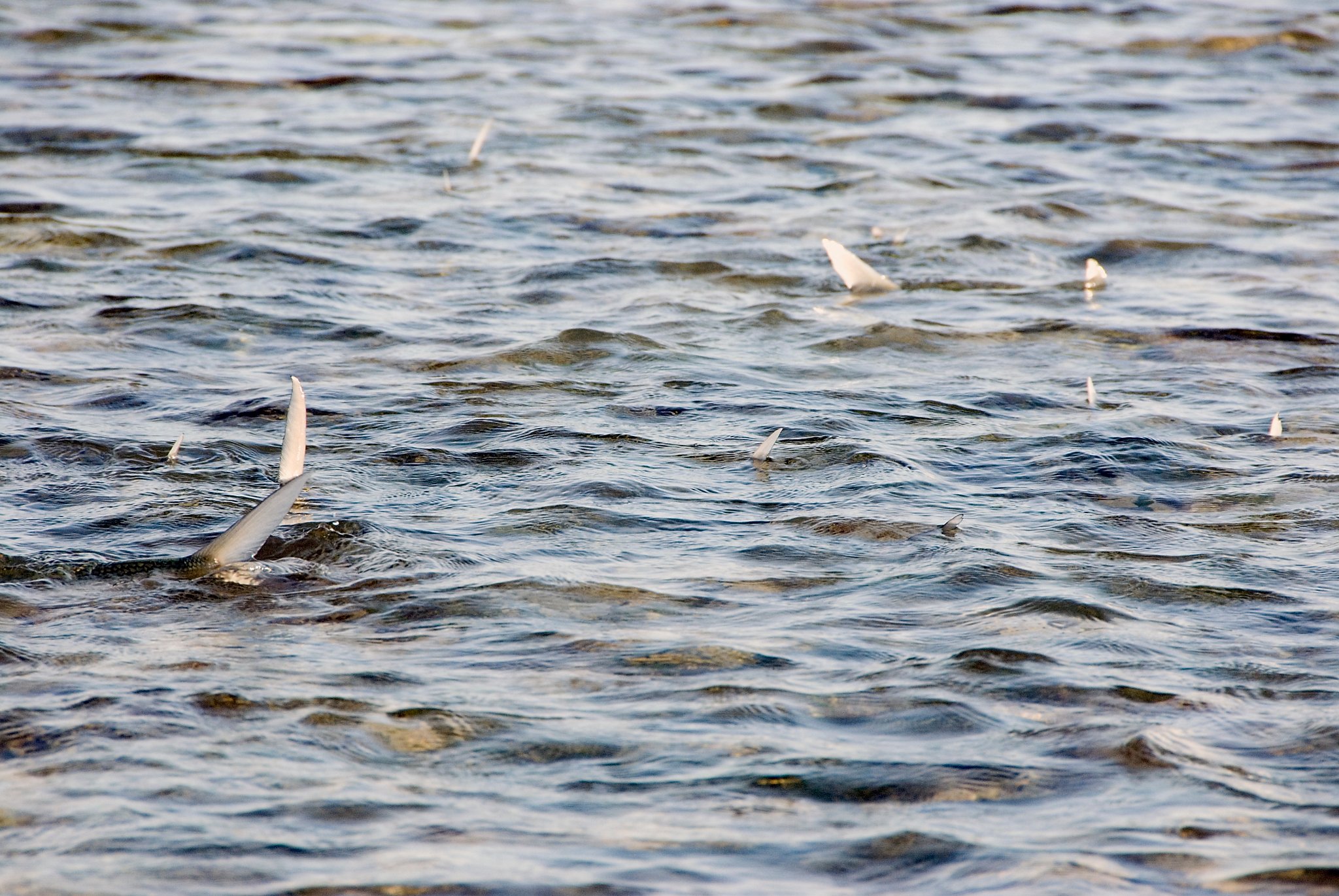

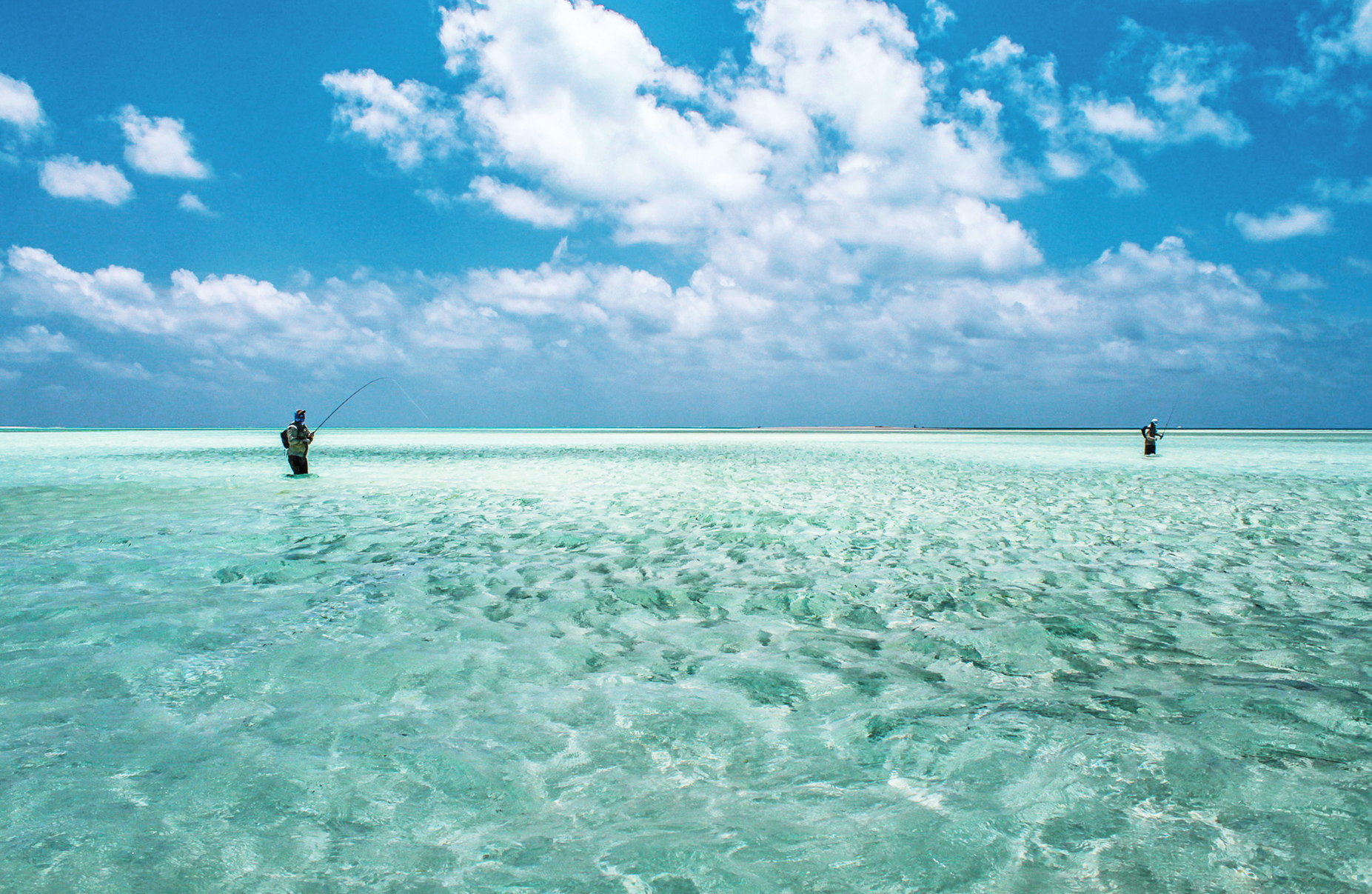

Bonefish Tips – How to spot Bonefish
Look For Movement
Spotting Bonefish is rarely as simple as seeing a clear outline in the water. More often, they reveal themselves as dark, moving shapes gliding slowly and steadily across the flat. The motion of your boat, combined with ripples on the surface, can make it tricky to distinguish fish from shadows or bottom features. A useful tip is to find a fixed object on the seabed as a reference point, then compare the movement of the “spot” against it to confirm if it’s a fish.
A quality pair of polarised sunglasses is indispensable here, cutting through surface glare and allowing you to see into the water with clarity. Instead of scanning every inch of the flat, train your eyes to read the water, subtle changes on the surface often give away far more than you’d expect. With practice, you’ll find yourself spotting Bonefish more quickly and confidently, turning potential confusion into opportunity.
Nervous water
Nervous water is a term most anglers will recognise, and when it comes to Bonefish, it’s one of the most useful skills you can develop. Simply put, it refers to the subtle disturbances on an otherwise calm surface that reveal the presence of fish below. On flat, glassy days, these signs are much easier to detect, but even with a slight breeze, a trained eye can still pick them out.
For Bonefish, nervous water usually appears in three forms: ripples caused by tailing fish, the tell-tale “V” wakes as they push across shallow flats, or flat spots created as they feed just beneath the surface. With practice, you’ll begin to recognise these patterns instinctively, and over time you’ll find yourself spotting Bonefish with confidence, often before your guide even points them out.
Tailing fish
The mouth of a Bonefish is positioned on the underside of its head, perfectly adapted for feeding along the bottom. When these fish tilt forward to root out crabs, shrimp, or other prey, their tails often break the surface, a tell-tale sign known as “tailing.” On calm, sunny days, spotting these tails can be as obvious as seeing a flag waving across the flat. However, when conditions are less forgiving, with cloud cover or wind disturbing the surface, it takes a sharper eye and more careful observation to pick them out.
V Wakes
As Bonefish move across shallow flats, they often create distinctive “V” wakes — long, trailing ripples on the surface caused by fish cruising just beneath the water. These wakes not only reveal their presence but also give you a clear indication of direction, as the head of the fish will always sit at the point of the “V.” On calm, flat days they stand out easily, but with practice, you’ll learn to detect them even in choppier, wind-ruffled conditions, turning subtle surface clues into valuable opportunities.
Flat spots
Flat spots, as the name suggests, are areas of stillness on an otherwise rippled surface. They’re usually caused by a Bonefish, or a small group of fish, swimming or turning just beneath the surface. On days with a slight to moderate chop, this subsurface movement interrupts the natural rhythm of the waves, leaving behind patches of calm water. Learning to recognise these subtle flat spots is another valuable clue that Bonefish are in the area.
Look Where You Can See
It may sound simple, but focus your time looking in the direction where visibility is best. How far you can see depends on factors like the angle of the sun and the colour of the bottom. If spotting fish at 100 feet feels unrealistic, concentrate your search at 50 feet instead. While it never hurts to give the harder-to-see areas a quick scan now and then, you’ll be far more effective by spending most of your time watching the water you can see clearly.
Follow Your Released Fish
If you’re new to spotting Bonefish in the water, make the most of every chance you get. One of the best learning opportunities comes just after you or your partner releases a fish. As it swims away, keep your eyes fixed on it for as long as possible. Watching how the fish moves at different distances will quickly help you train your eye and build confidence in recognising Bonefish in varying conditions.
Work with your guides
When you’re out on the flats, remember that your guide is your greatest asset. They know these waters inside out and are experts at spotting Bonefish in all conditions. Don’t hesitate to ask for their help, by following their cues and learning how they pick out fish, you’ll quickly build the skills to start spotting Bonefish on your own.
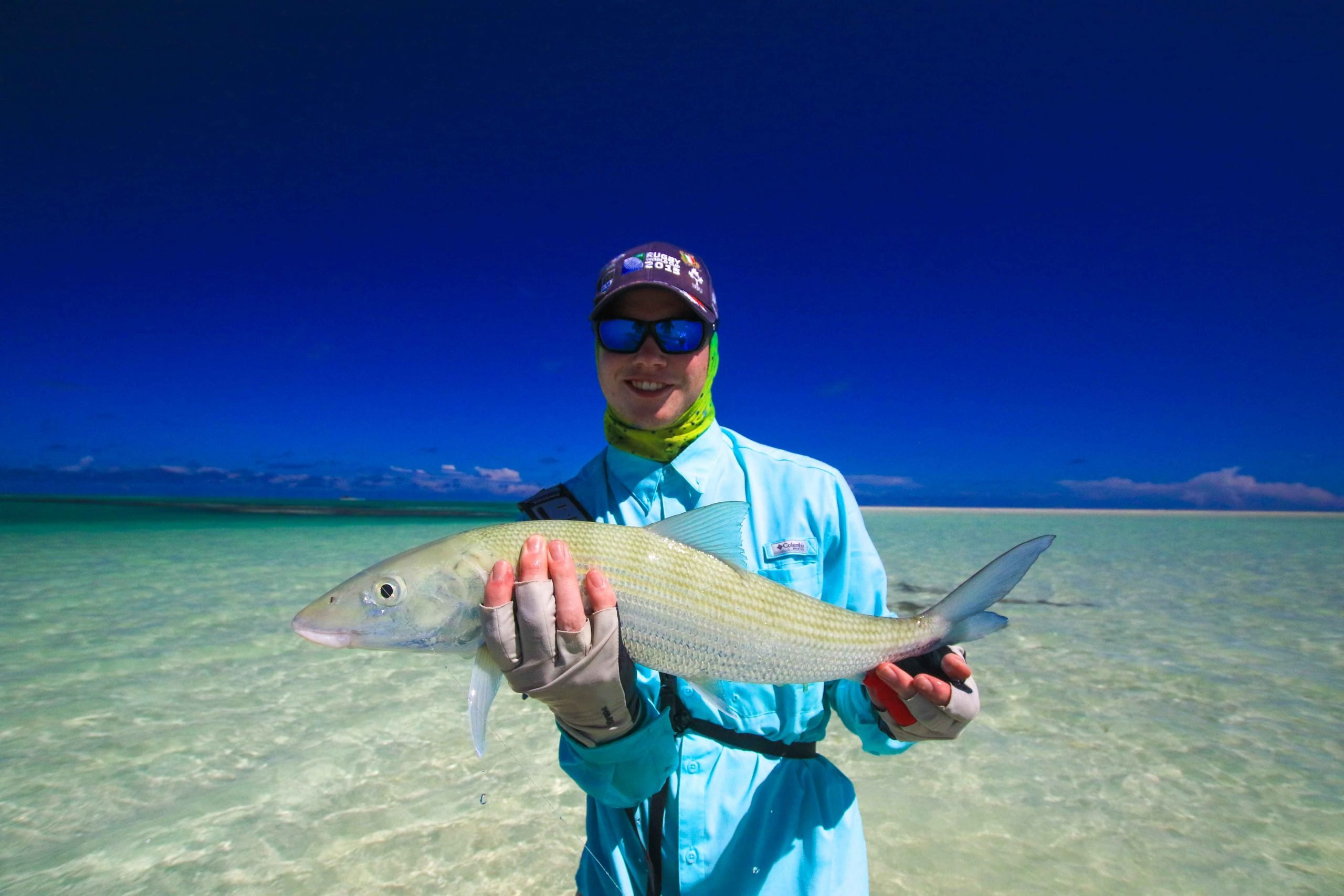

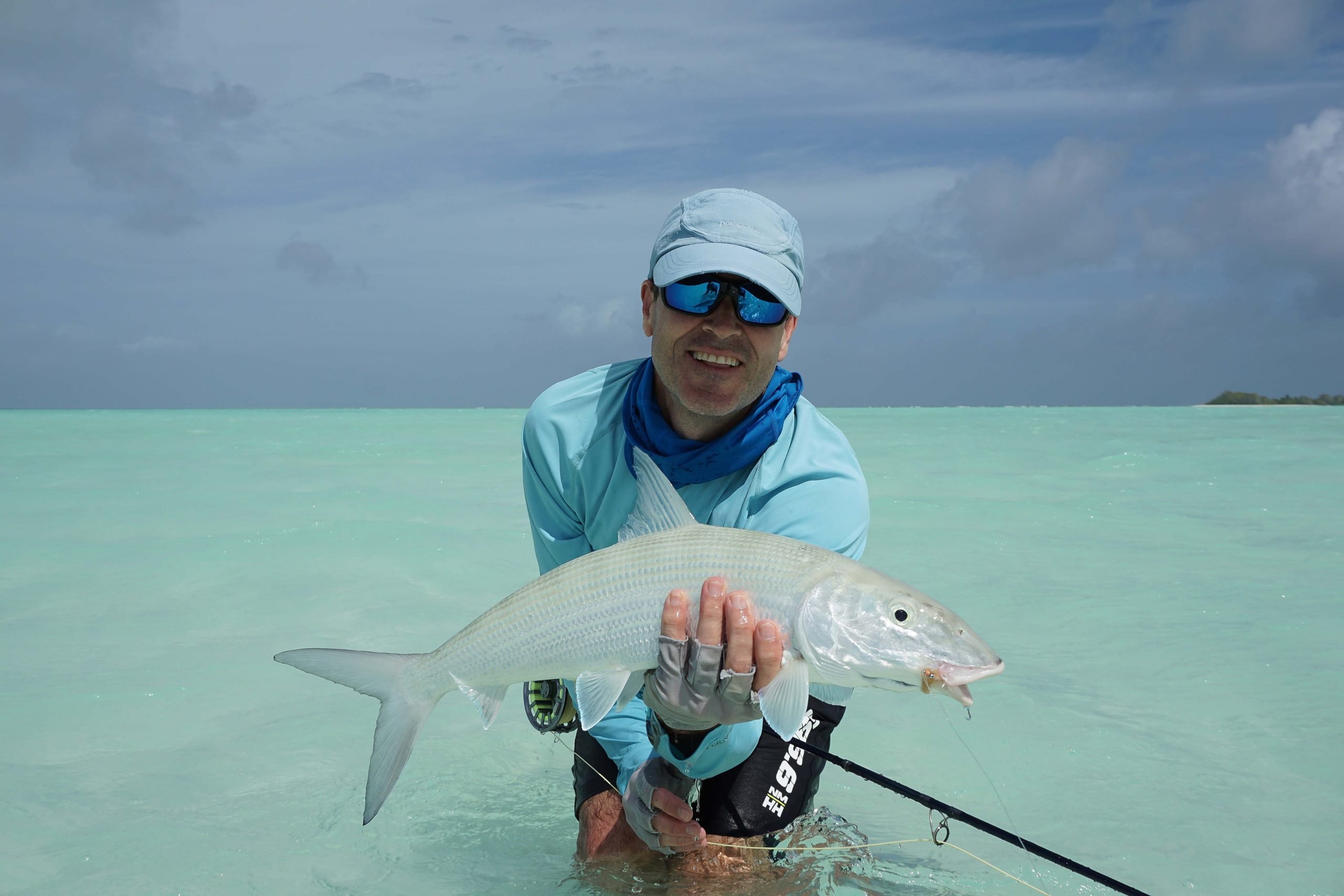

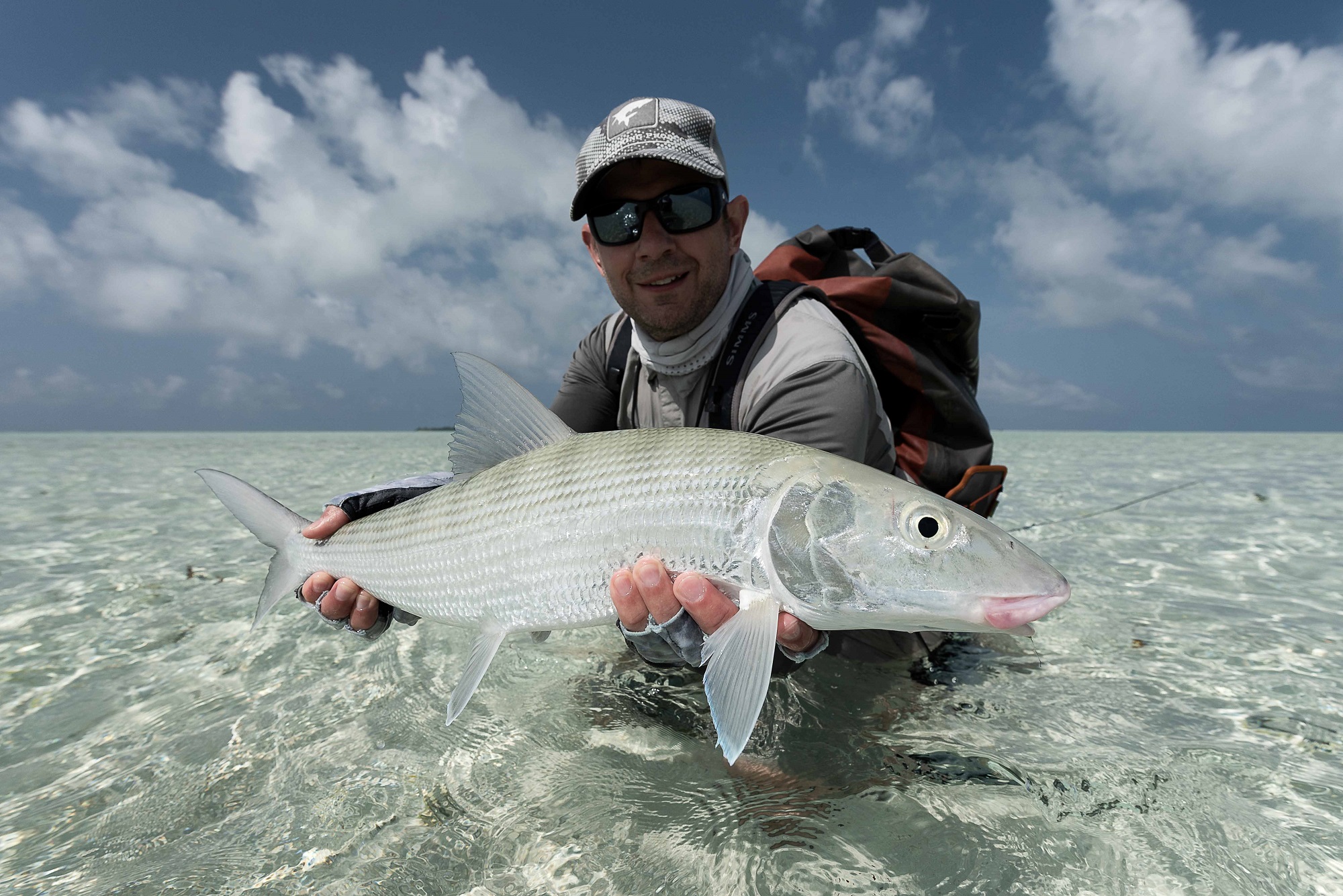

Bonefish Tips – How to catch Bonefish
Fly Fishing for Bonefish can be as technical as you want it to be. There are tides to take into consideration. Wind direction and speed. New tackle requirements and knots to master. Deciphering the nuances and habits of large fish, plus the infamous strip-set that continues to confound trout fly fishermen the world over. Thankfully, on all of our holidays you’re in good hands. Our veteran guides have the skills to find fish, but they also possess the patience needed to walk you through the process from perfecting casts to proper fish handling skills and everything in between.
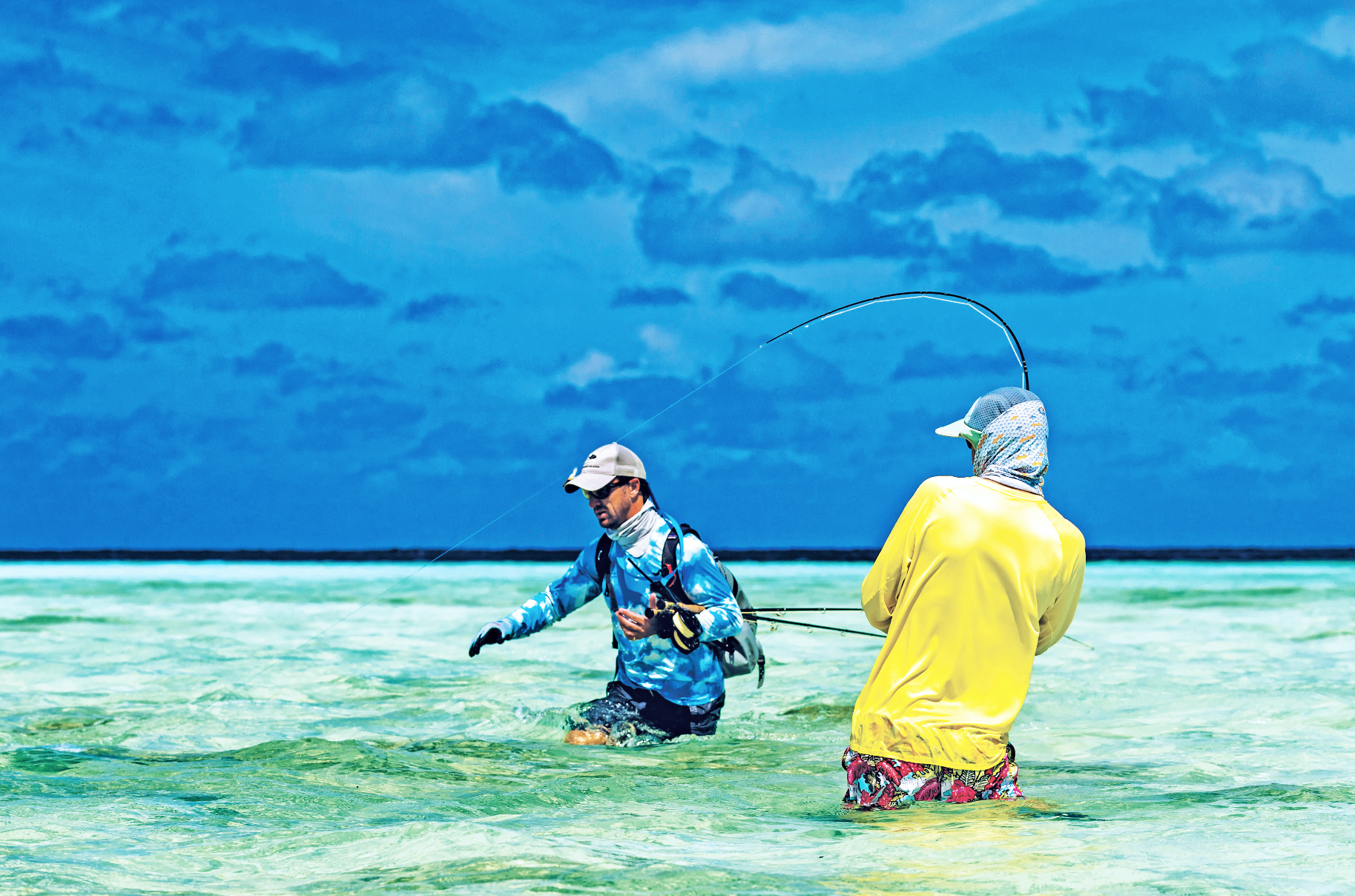

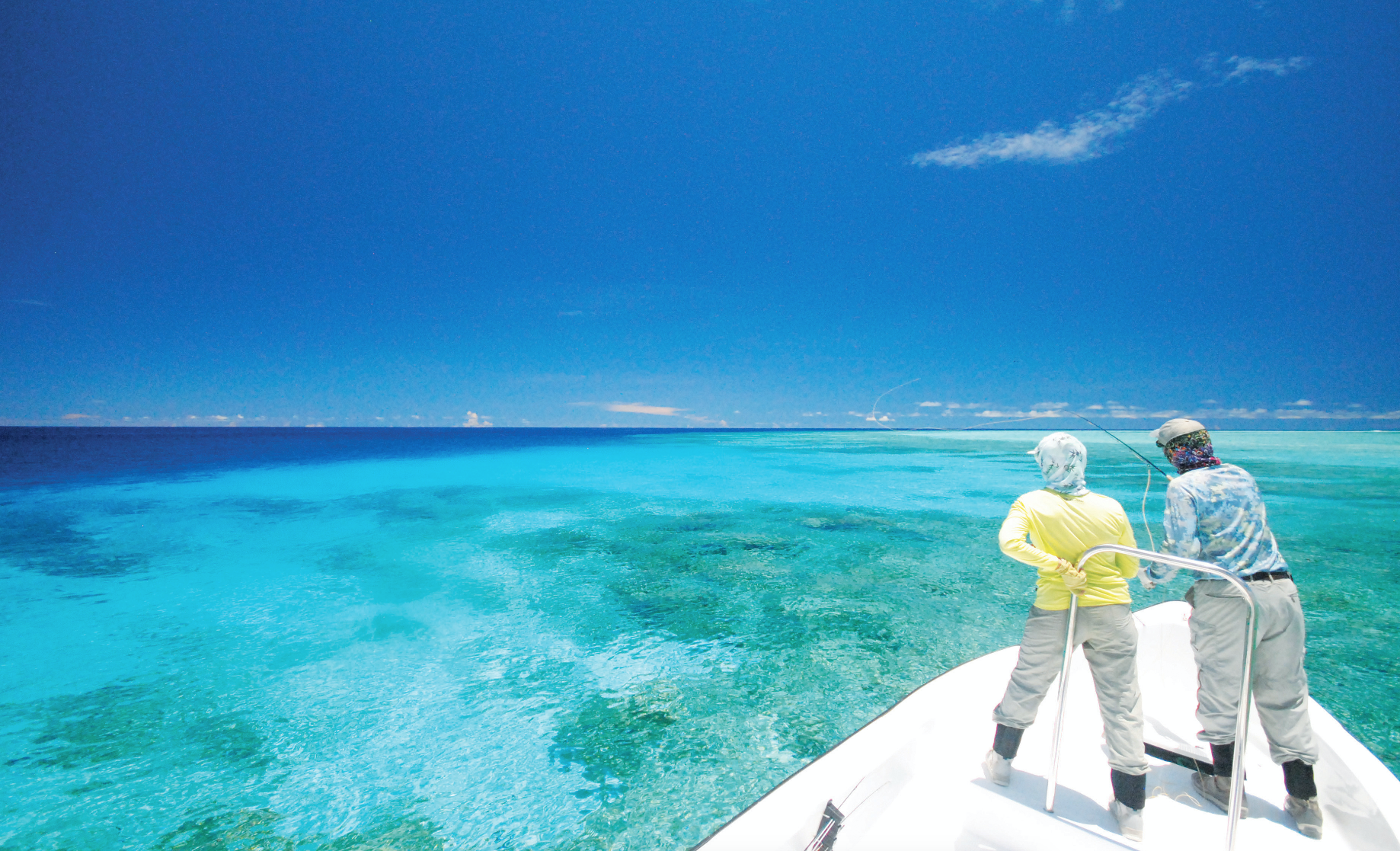

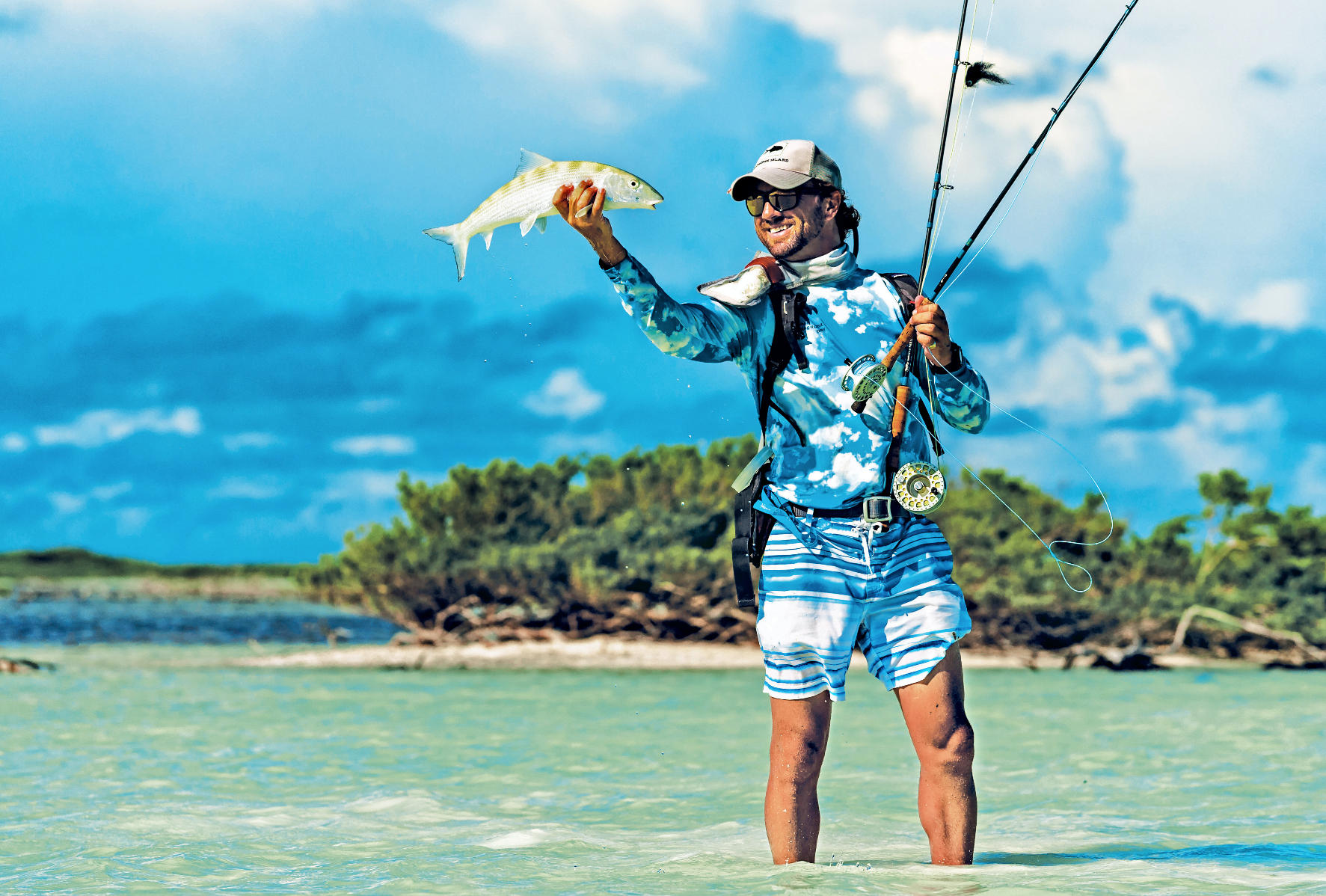

One of the biggest factors that can make or break a saltwater fly fishing holiday is whether you fish with a professional guide. Unless you are a very seasoned flats angler with dozens of trips under your belt, having an expert by your side is invaluable. Guides don’t just know the waters, they know how to read conditions, spot fish, and put you in the right place at the right time.
While some anglers consider DIY fishing to save costs, it often means missing out on opportunities. A single day guided, with your guide’s trained eyes pointing out Bonefish, can be more productive and rewarding than an entire week fishing alone. If your goal is to make the most of every minute on the water, then investing in professional guidance is the best decision you can make.
Tips for catching Bonefish
Below are some of our top tips for fishing for Bonefish; I hope they help some of you land a fish of a lifetime.
Adjust your fly to changing water depths
The most effective Bonefish flies fall into three main categories: unweighted, lightly weighted (with bead-chain eyes), and heavily weighted (with lead eyes for a fast drop). Choosing the right style often comes down to water depth and how the fish are feeding. Since Bonefish are primarily bottom feeders, designed to hoover up crustaceans scuttling across sand and turtle grass, your fly needs to be presented where they expect to find it—on the bottom.
Accuracy and timing are everything. Cast too close and the fish will spook, but lead an incoming Bonefish by 1 to 6 feet (closer for tailing fish, further for cruisers) and allow the fly to sink naturally into the strike zone. A simple rule of thumb is that your fly should reach the bottom within three seconds. If it’s hanging in the water column too long, step up to a heavier pattern—switching from bead-chain to lead eyes, for example—so your presentation stays exactly where the Bonefish expect their prey to be.
Intercepting fish is all about timing
Once your fly is in position, the next step is to bring it to life. The classic Bonefish retrieve with shrimp imitations like Crazy Charlies, Gotchas, or spawning shrimp patterns is a steady strip-stop rhythm: a smooth pull on the line, then a quick pause, repeated until you draw a reaction.
Every Bonefish behaves differently, so this is where your guide becomes invaluable. They may tell you to strip faster, slower, longer, shorter—or even to stop completely. The goal is to trigger that moment when the fish commits and inhales the fly. When it does, finish with a firm strip strike to drive the hook home.
Bringing your Bonefish to hand
Once you hook a Bonefish, the next few seconds are pure chaos—and how you handle them often decides whether you land the fish. The key is to stay calm and focus on clearing your line. Make sure it runs freely off the deck and through the guides without snagging on your reel, fighting butt, or even under your feet. A single tangle can end the fight before it starts.
To help, keep your rod and stripping hand apart and lightly pinch the line as it feeds through, letting it run smoothly rather than in sharp bursts. Once the line is safely on the reel, lift your rod tip and let the fish run. Most Bonefish will take one or two blistering sprints into your backing before you can begin applying side pressure to turn and tire them.
When it comes to release, remember Bonefish are delicate. Keep them in the water whenever possible, and if you want a photo, make it quick. Prolonged handling and air exposure dramatically increase mortality rates, so a careful, fast release ensures the Silver King of the flats is ready to fight another day.
When it comes to fly colour
There are plenty of theories when it comes to Bonefish flies, but the golden rule is simple: match the surroundings. Just as small prey species blend into their habitat to avoid predators, your flies should mimic the colours of the flat you’re fishing. On the sandy Marls, for example, tan and buff patterns work best, while spawning shrimp imitations like the Puglisi or Peterson’s have proven highly effective in recent years.
Crab patterns are also excellent choices, not just for Bonefish but for Permit and even Mutton Snapper that roam the same waters. When tied in smaller sizes (#2, #4, and #6), they’re easy to cast, sink quickly, and perform well on medium to deeper flats. Proven favourites include the Bauer Crab, Merkin, and Kung Fu Crab. If you’re faced with mixed opportunities on the flats and want a fly that can cover multiple species, a well-tied crab pattern is hard to beat.
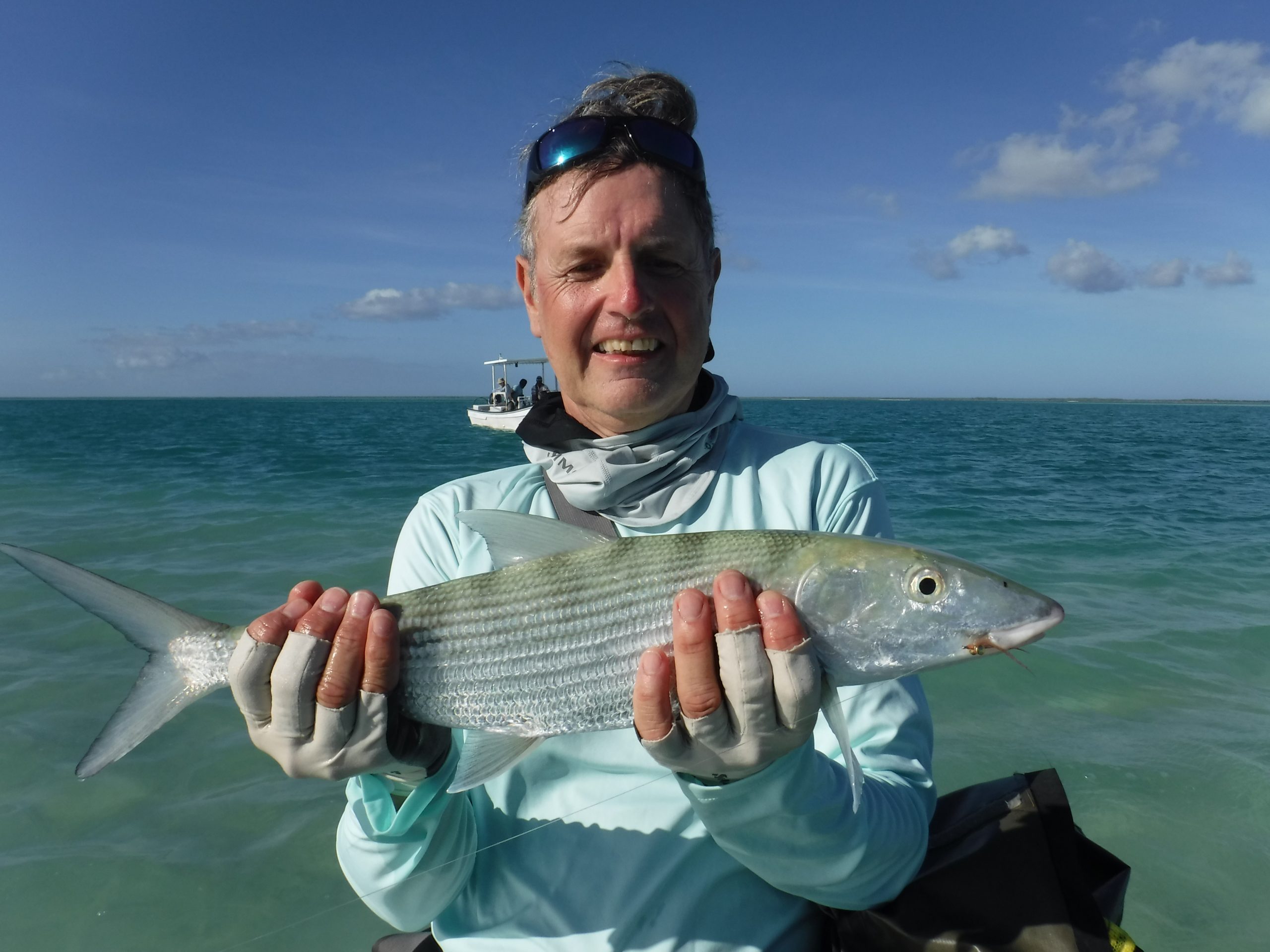

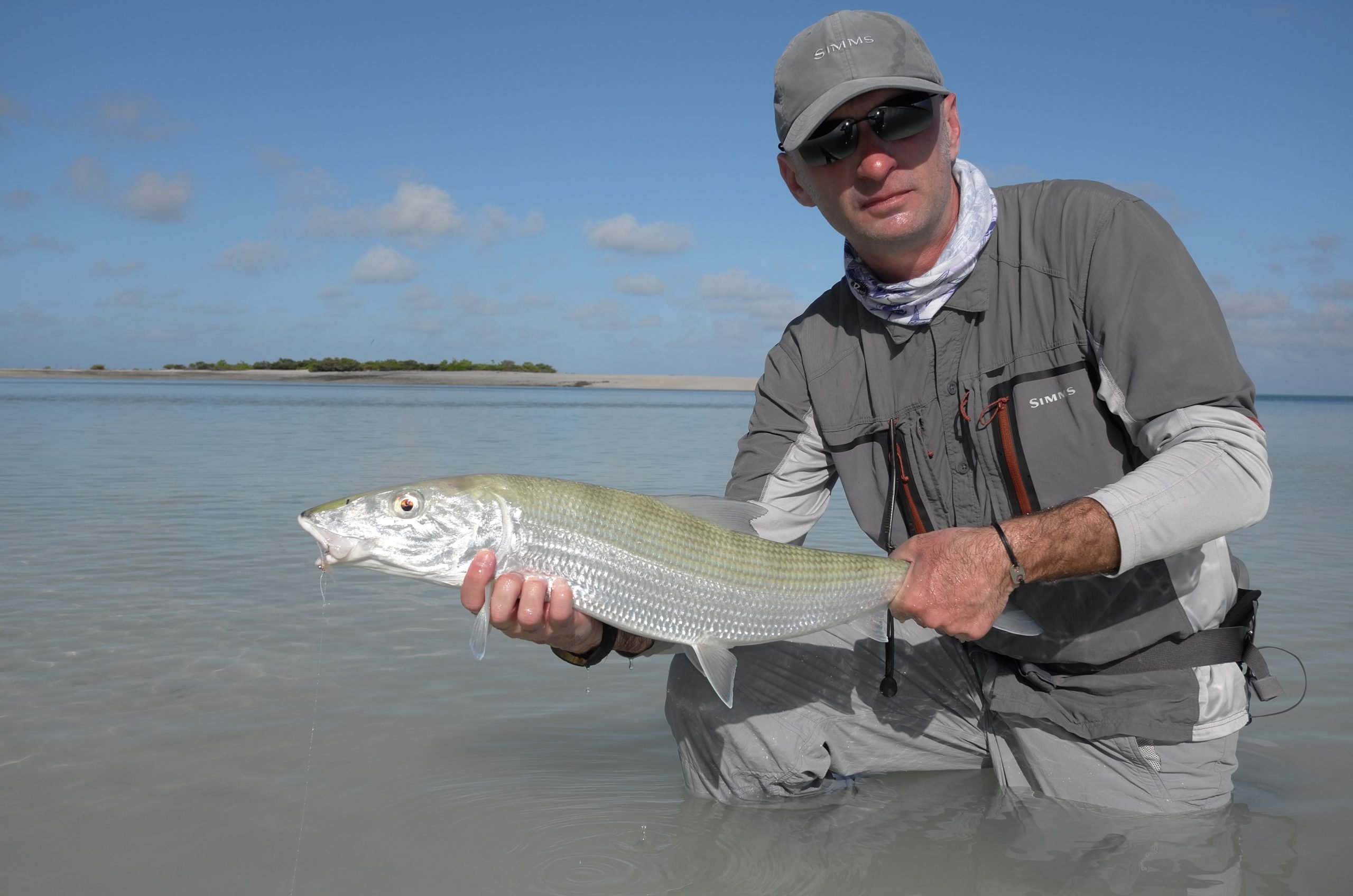

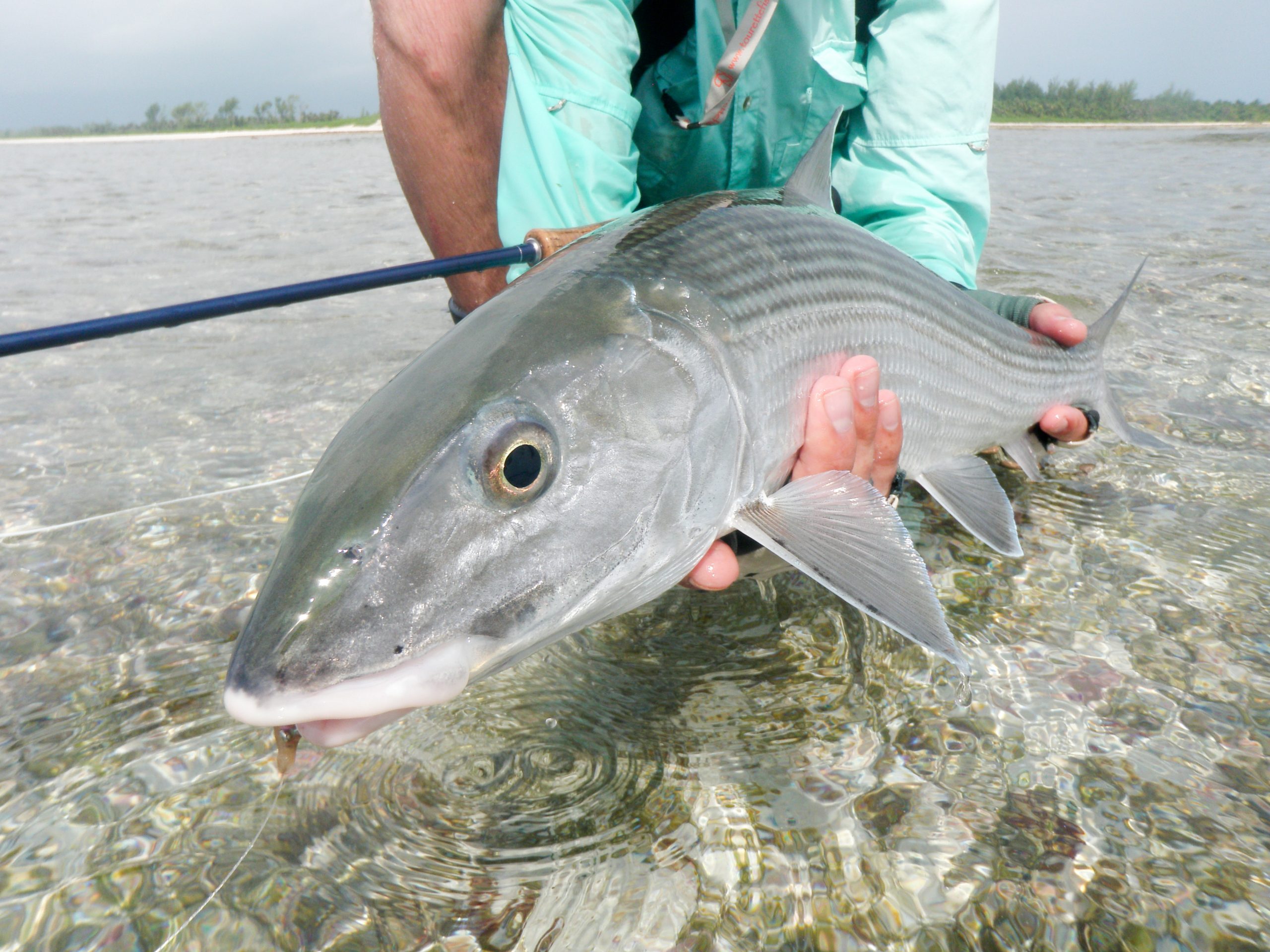

Bonefish Tips – Where to catch them
That’s the million-dollar question—but we’ve made it simple for you. Every one of our Bonefish destinations has been carefully tried and tested, and we only work with the very best lodges and most experienced guides. So wherever you choose to travel, you can be confident you’ll be in the right place, with the right people, for the very best fishing.
Alphonse Island – Seychelles
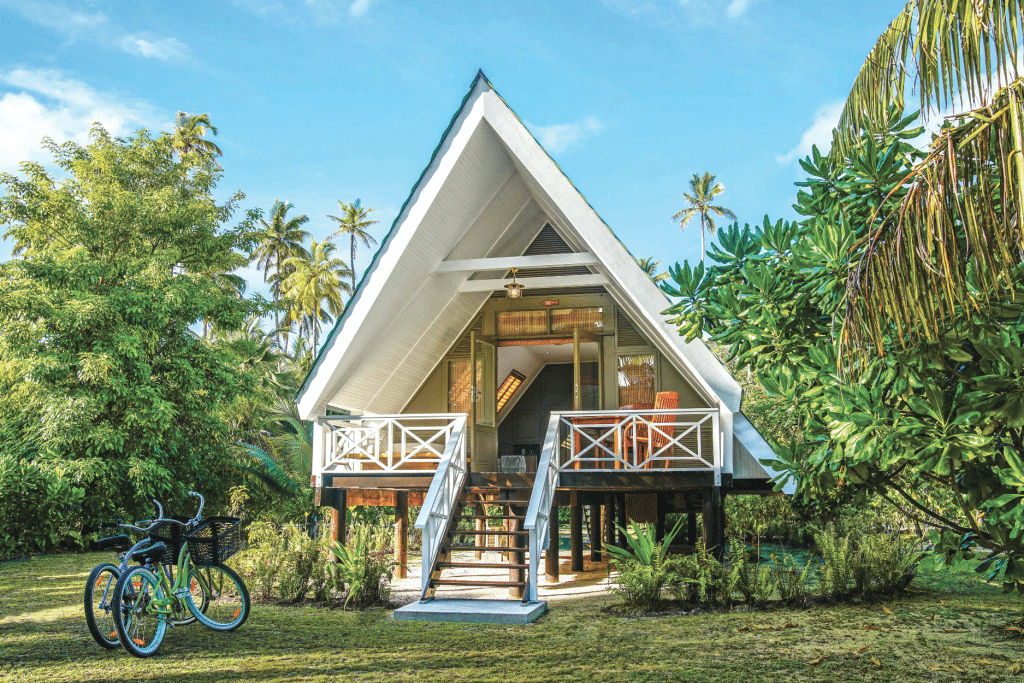

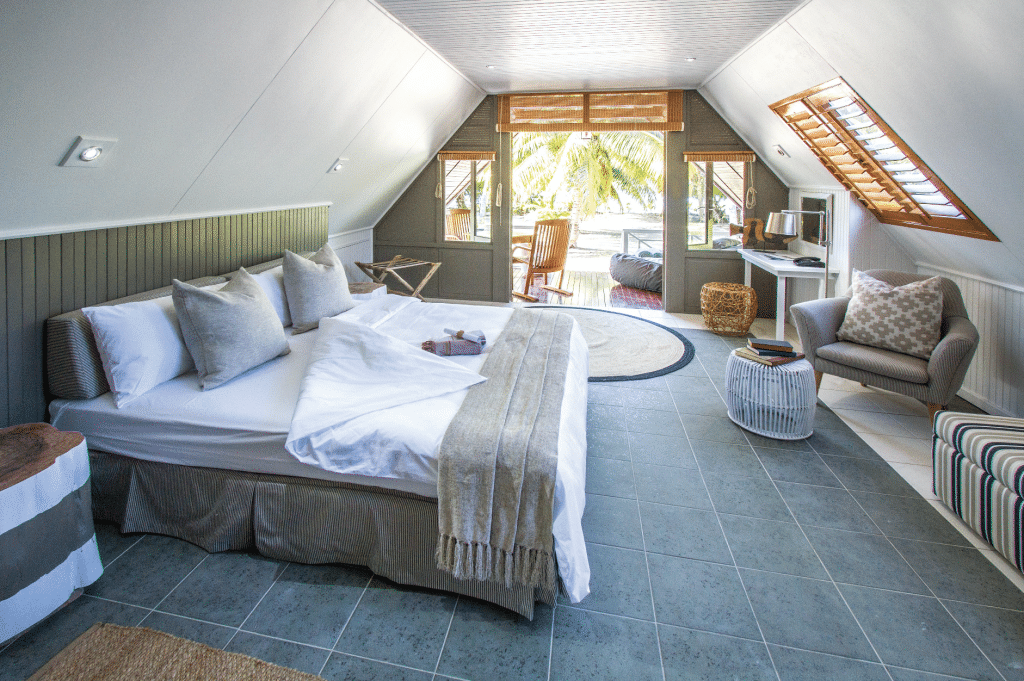

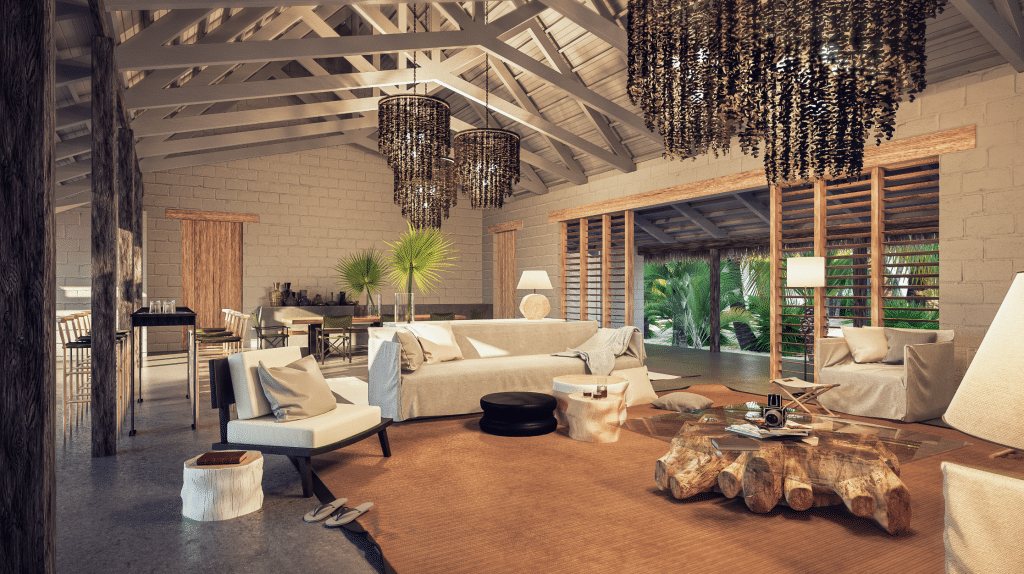

Alphonse Island is the definition of tropical saltwater fly-fishing paradise. Part of the remote Alphonse Atoll in the Seychelles, this destination offers long, unblemished white-sand flats, crystal clear waters, and an incredibly rich variety of flats species. Bonefish are abundant, schooling along drop-offs, sunken wrecks, and across vast flats; Trevally (including Giant and Bluefin), Indo-Pacific Permit, Triggerfish, Milkfish, and Parrotfish also thrive, making every fishing day exciting and varied. Sight-casting dominates, especially in the soft morning light, and the fishing pressures are kept low thanks to strict rod limits and catch-and-release practice.
The lodge itself blends comfort with natural beauty. Guests stay in air-conditioned beach bungalows or one-bedroom beach suites set steps from the ocean, each with ocean or lagoon views. Evenings are relaxed, with a beach bar, lounge area, a boutique, spa, swimming pool, and excellent dining serving freshly caught fish. Off the water, you can snorkel, dive, explore the lagoons and reefs, or simply walk the beach and enjoy the island atmosphere. Alphonse Island delivers the kind of fly-fishing holiday where every day feels like an escape, combining high quality sport with luxury, serenity, and natural wonder.
Fisherman Lodge – Mexico
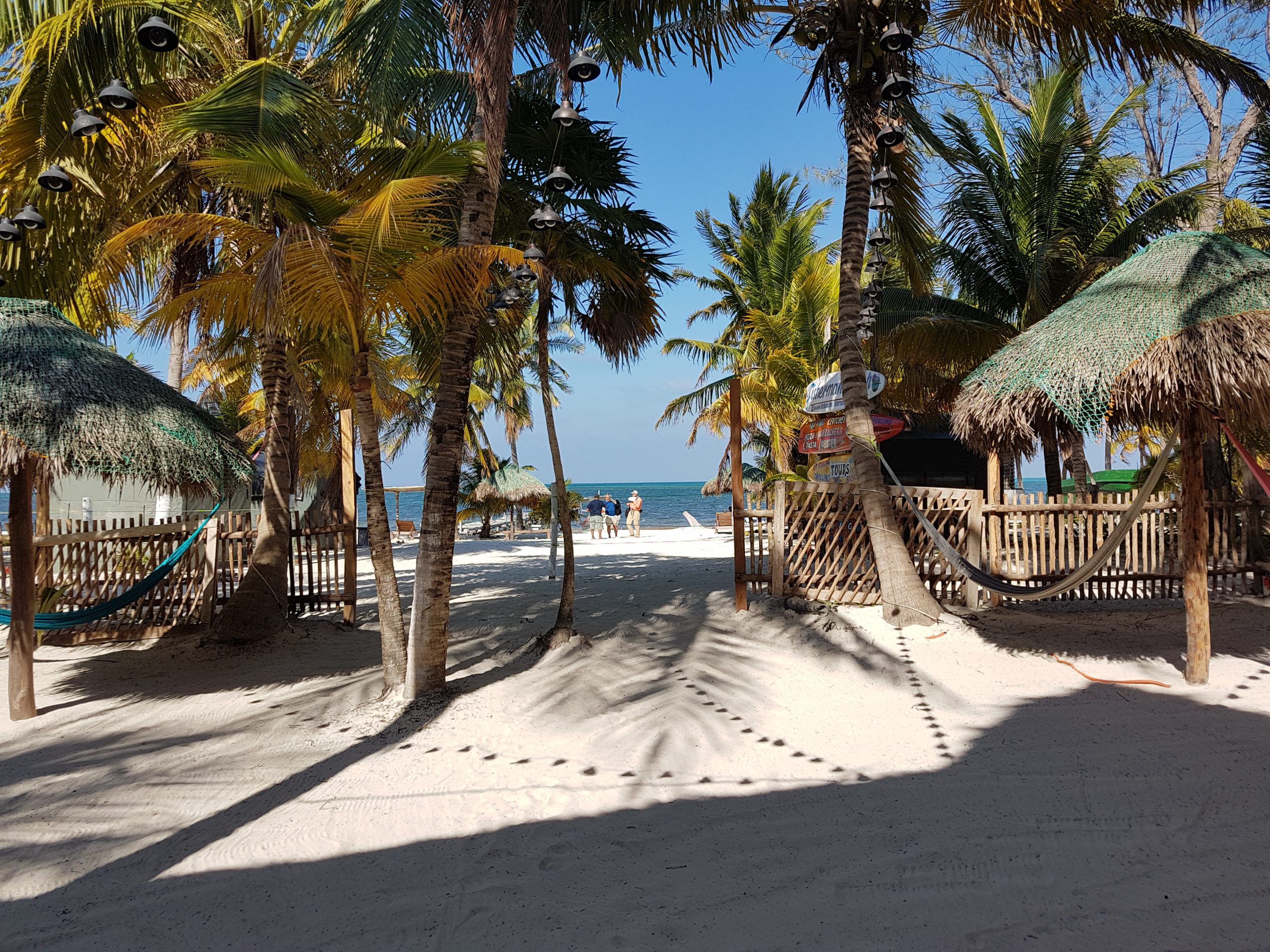

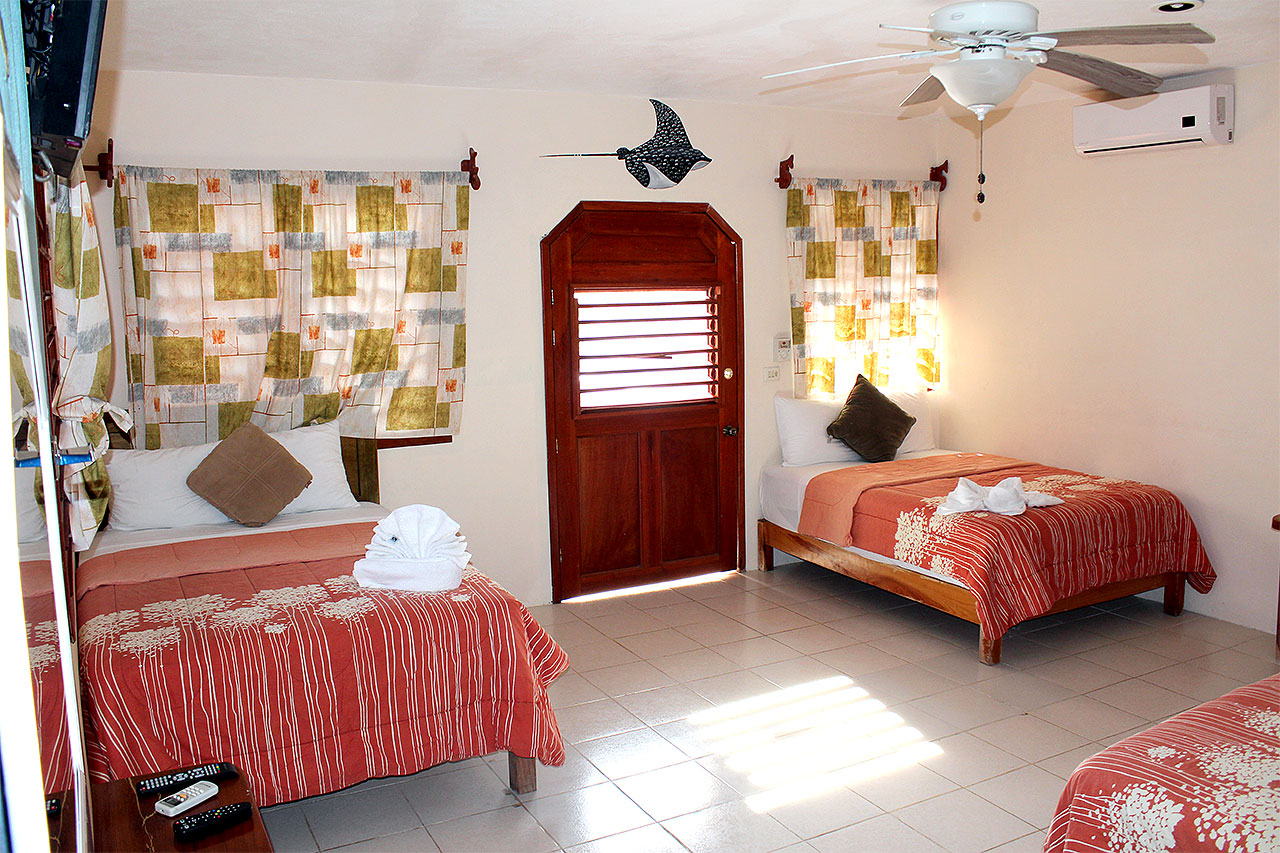

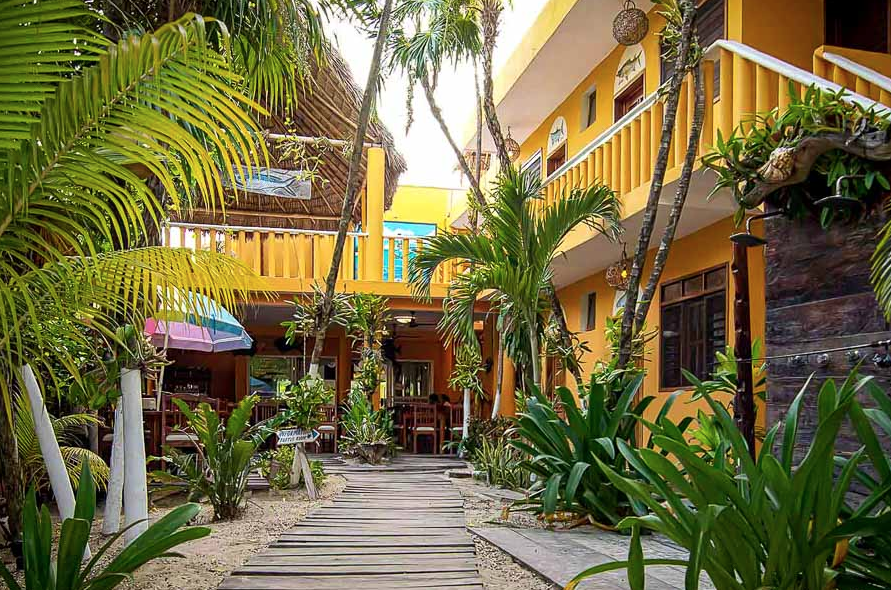

Nestled in the remote village of Punta Allen on Mexico’s Yucatán Peninsula, Fishermen’s Lodge sits in the heart of Ascension Bay inside the vast Sian Ka’an Biosphere, a protected wilderness of mangroves, shallow flats and lagoons. This isolation has allowed the Bonefish, Permit, Snook and juvenile Tarpon populations to flourish, making the flats some of the most productive in the Caribbean. Bonefish days of 20–30 takes are common, especially when conditions are right, with sights of moments like tailing fish, clean presentations and school after school of cruising fish, truly a flats angler’s paradise.
Evenings at the lodge balance adventure with authentic comfort. With nine beautifully appointed “Grand Slam” rooms, generous ensuite facilities, air conditioning, a private full bathroom, and creature comforts like rod racks and fly-tying tables, the lodge makes rest and recovery just as enjoyable as being on the water. Dining is a highlight, with fresh regional seafood, local vegetables, and touches of Mexican flavour in every dish. Non-fish-days are far from idle, snorkeling, bird-watching, mangrove kayaking, eco-tours of the biosphere or simply relaxing by the beach bar allow you to soak in the setting. Fishermen’s Lodge is perfect for anglers and travel partners alike: great fishing, warm hospitality, and days full of discovery.
CHRISTMAS ISLAND LODGE – Christmas Island
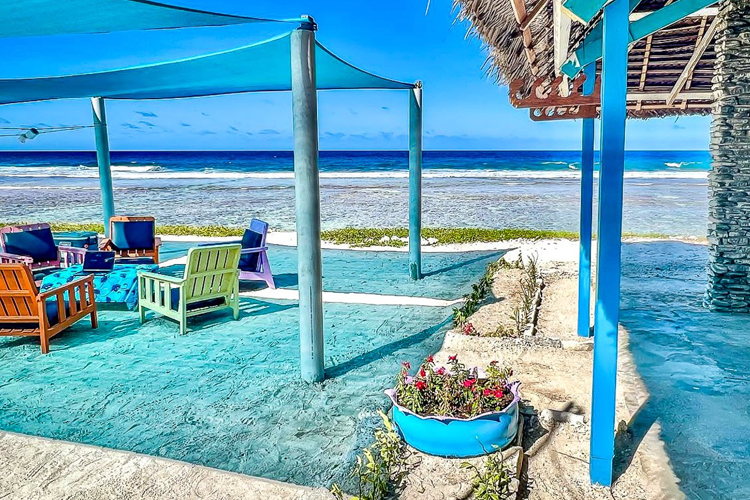

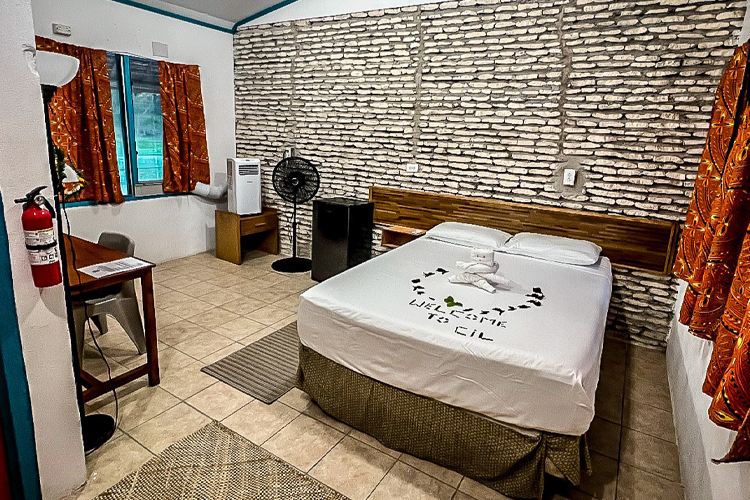

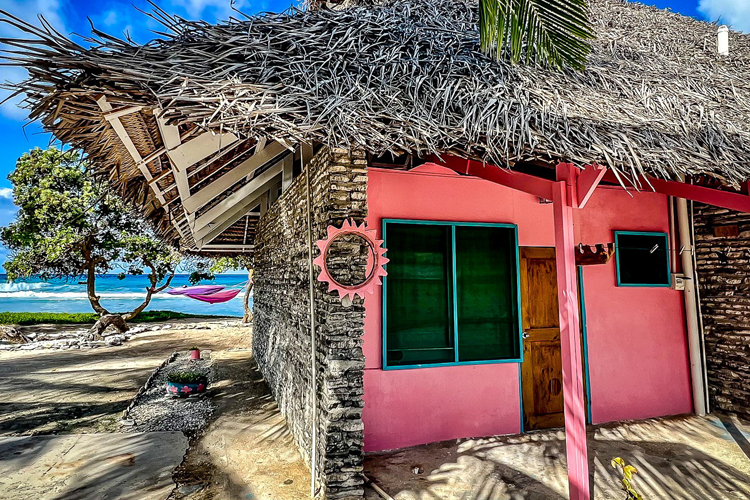

Christmas Island Lodge is a world-class saltwater fly fishing destination set on the edge of a vast blue-water lagoon on Kiritimati (Christmas Island). Its remoteness and clarity of flats make it one of the best wade fisheries in the world, especially for Bonefish. Hard, white sand flats stretch for miles and schooling Bones cruise the shallow water in extraordinary numbers, giving both sight-fishing thrill and long, blistering runs when they commit. Alongside Bonefish, giant Trevally, abundant Triggerfish, and reef species add variety, there’s something for every fly-angler at every tide.
At the lodge, things are kept intimate and comfortable. There are only six traditional bungalows, each with private suites, en-suite bathrooms, air conditioning, and excellent Wi-Fi. Evenings are relaxed, with open-air lounges where guests gather to enjoy freshly prepared meals, island cocktails and stories from the day. Non-fishing time can be spent snorkelling, birdwatching, walking the beach, or simply soaking up the secluded island atmosphere. It is a perfect place for pairs of friends, solo travellers, or any angler who wants superb Bonefish action combined with true tropical island escape.
El Pescador Lodge – Belize
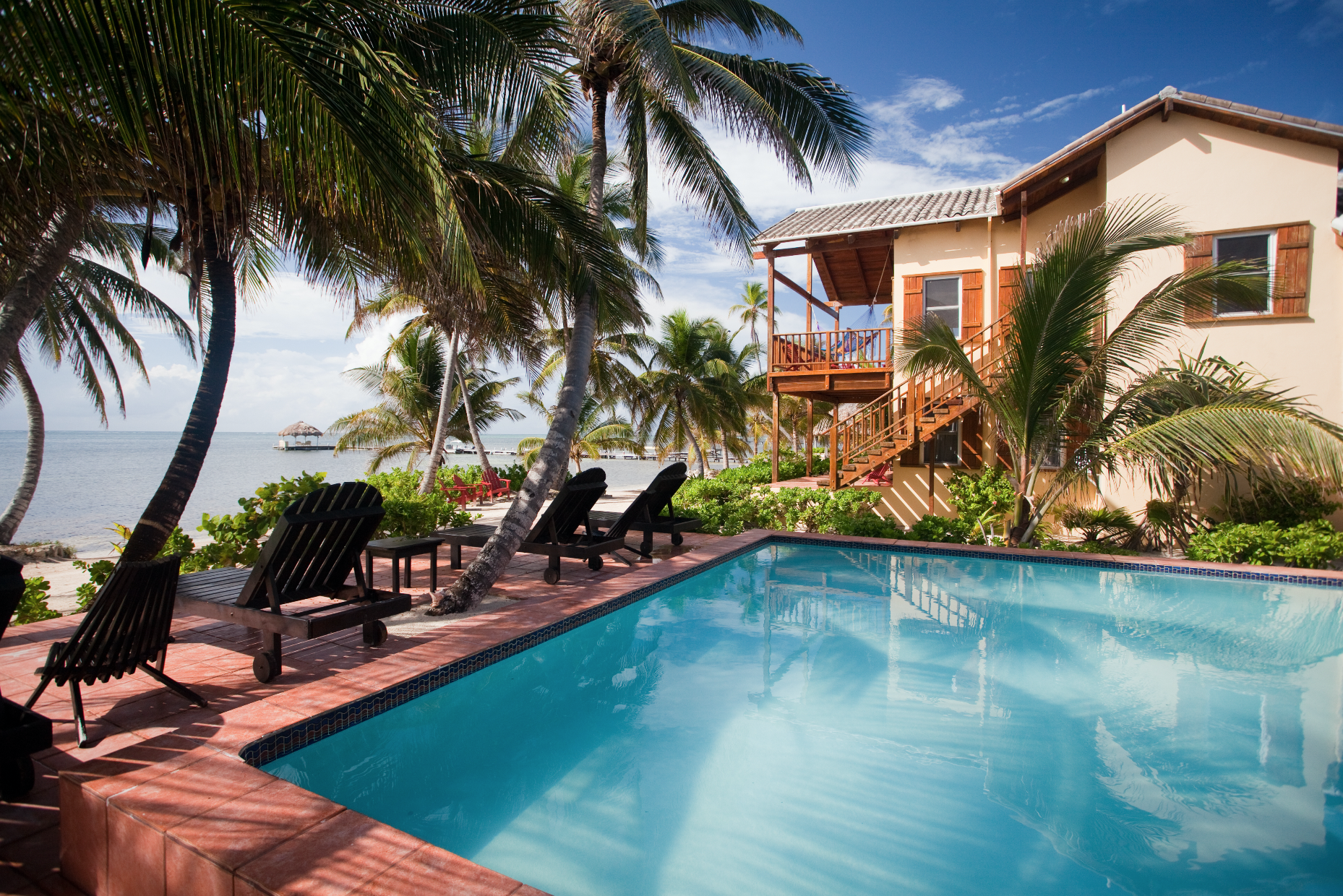

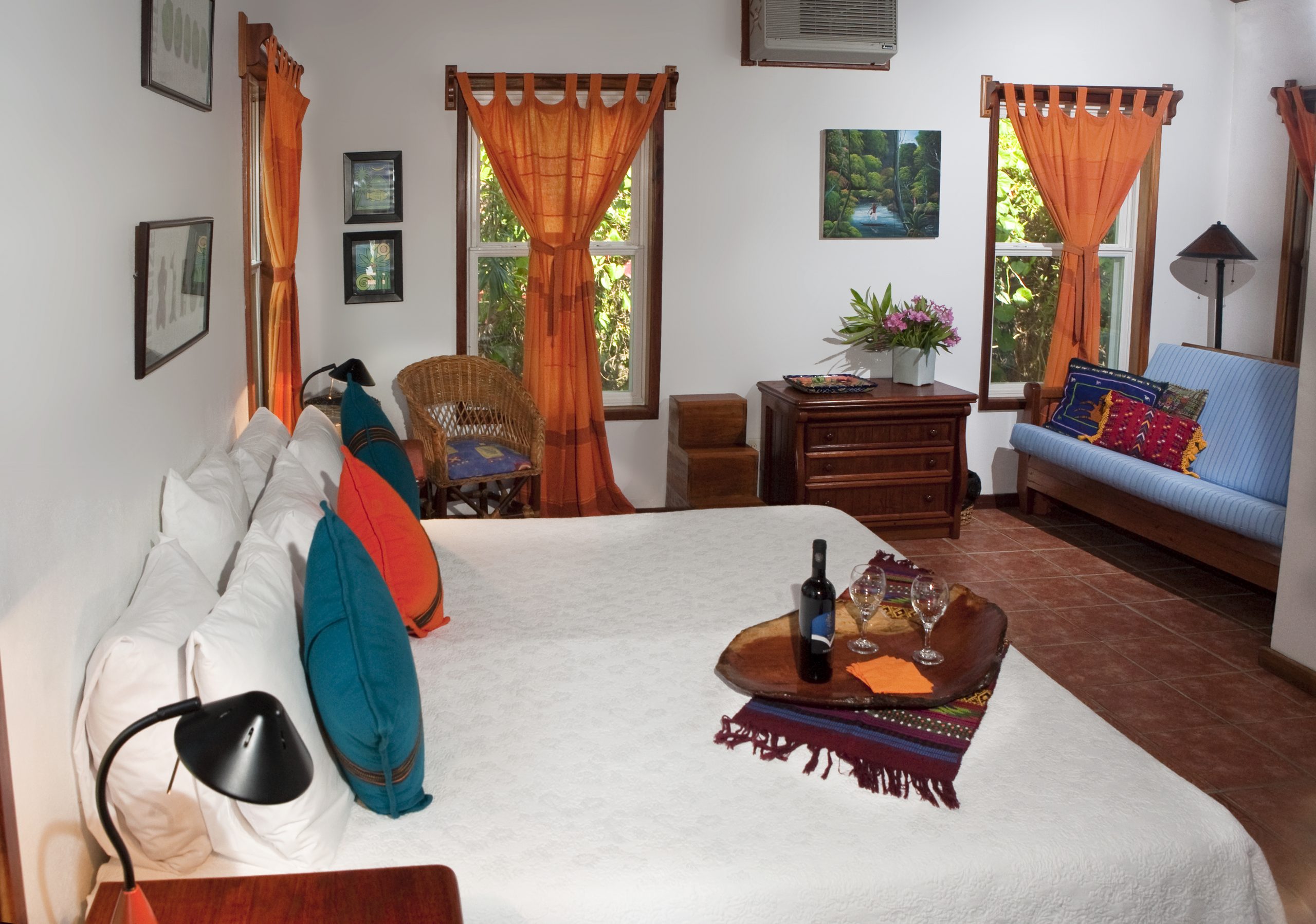

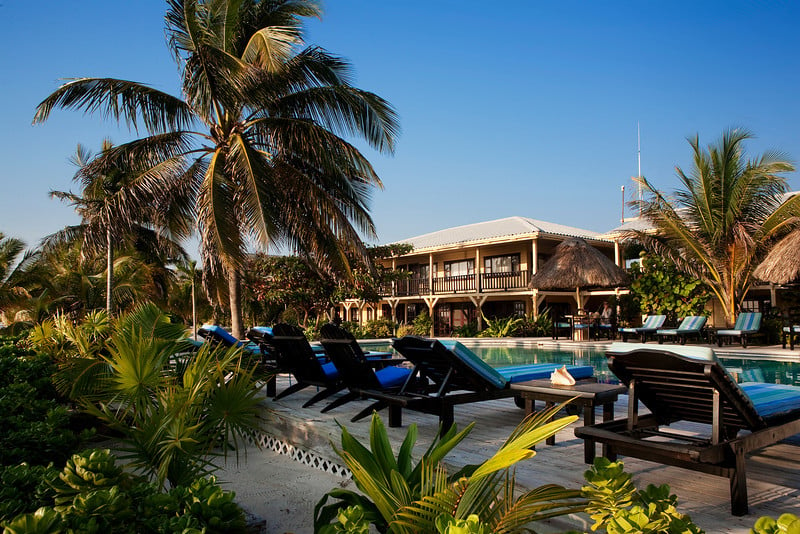

El Pescador Lodge sits on the edge of Belize’s Caribbean flats at Ambergris Caye, a place where the water is as clear as glass and bonefish are everywhere. With endless shallow flats just minutes from the resort and guides who know the water intimately, anglers enjoy daily encounters with schooling Bonefish averaging 5-7lb, with plenty of shots at larger fish as well. Flats fishing here includes wading over sandy ground, poling from 23-foot panga boats, or exploring quiet lagoons, it’s flexible, exciting, and built around what you want to fish.
The lodge itself combines fly-fishing specialist amenities with warmth and comfort. You’ll stay in rooms in the main lodge or opt for private 1-, 2- or 3-bedroom villas with views of beach or reef, hardwood floors, coral stone finishes, and tropical gardens. Meals are fresh, often seafood-led, and relaxed. Non-fishing days are far from idle, snorkel the reef, dive, kayak, take a jungle river cruise, or simply unwind in the bar or by the pool. El Pescador offers the perfect mix of gentle pace and fishing intensity, wonderful for anglers, and just as much for those who travel with them.
Turneffe Flats – Belize
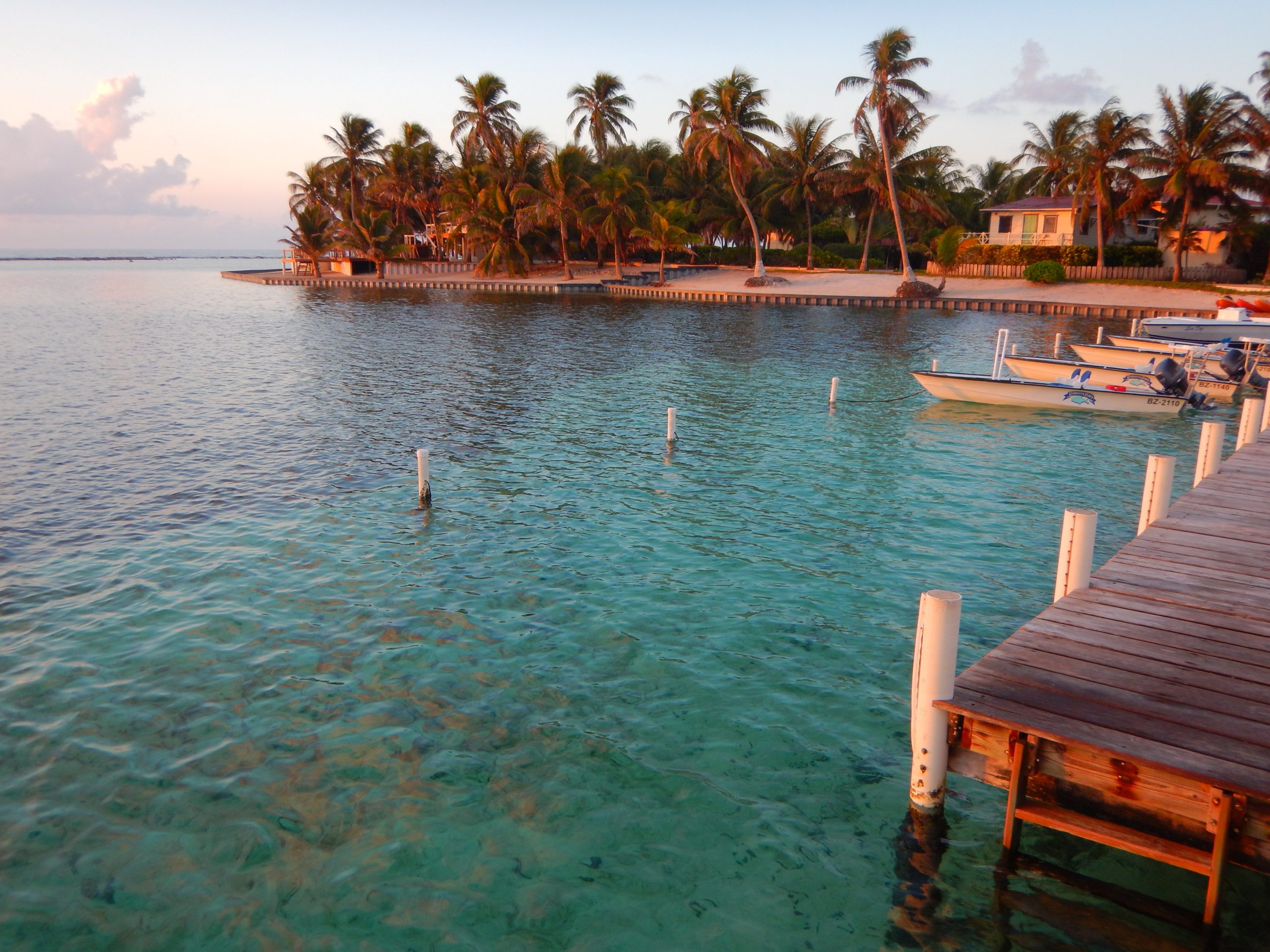

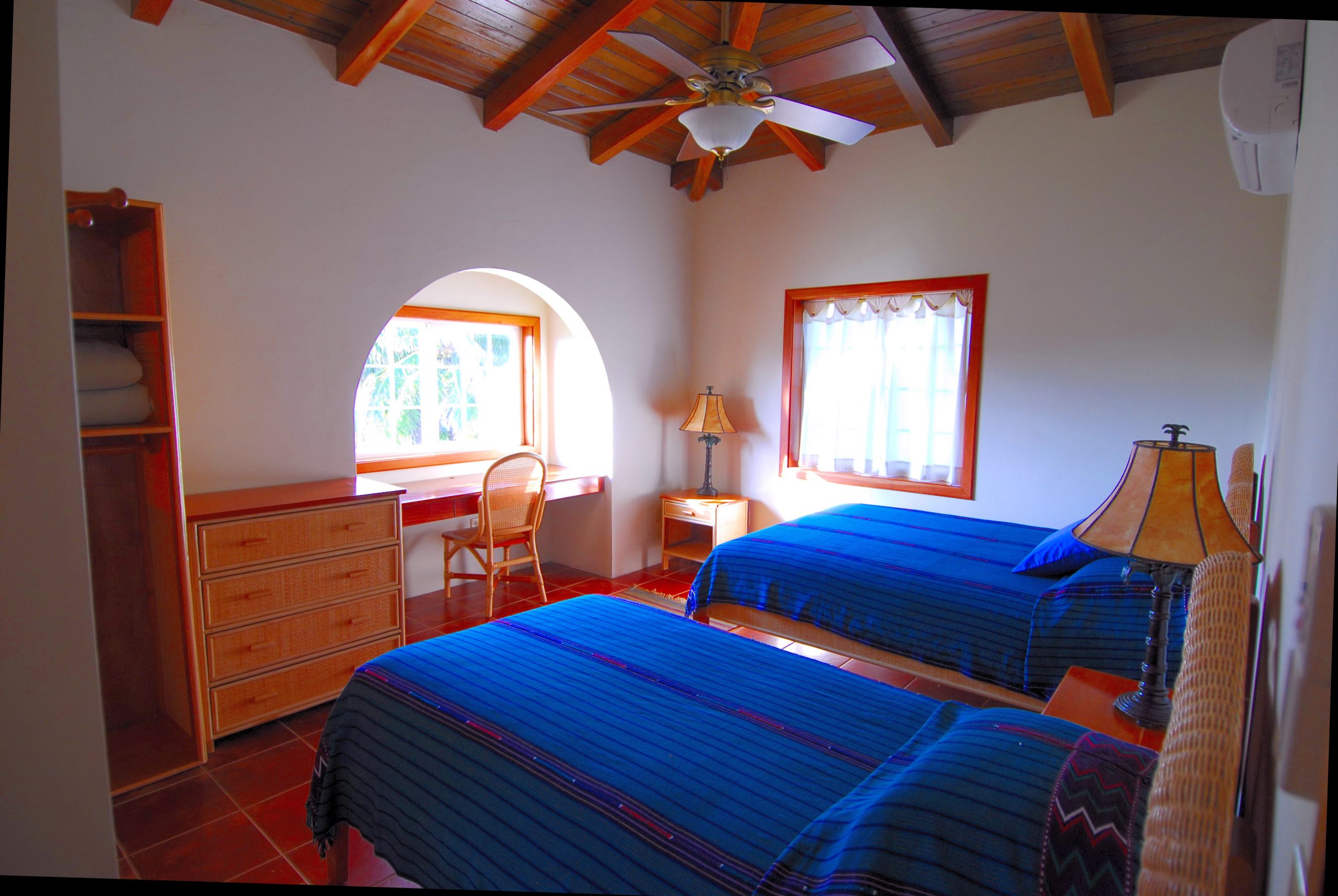

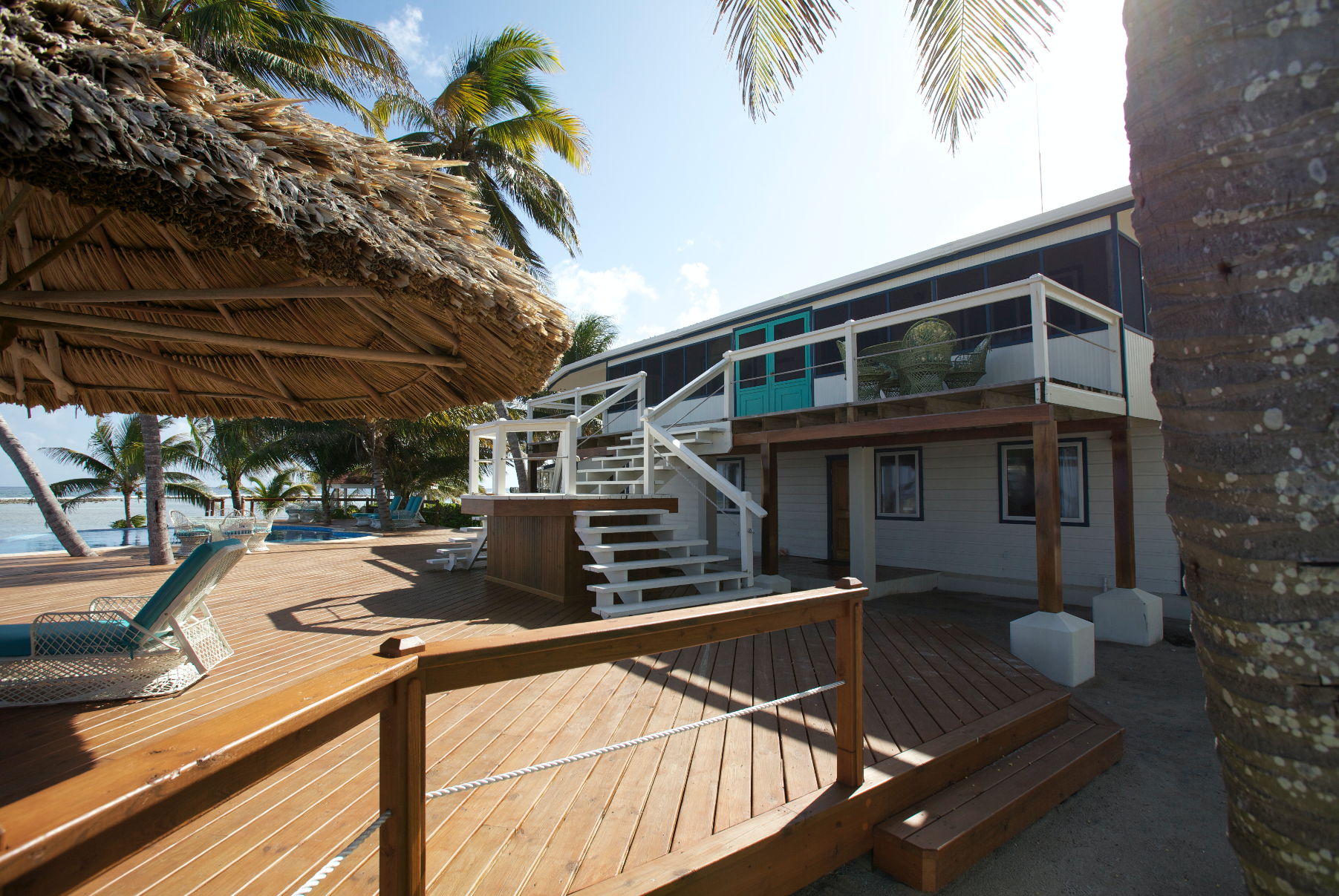

Turneffe Flats Lodge sits on Belize’s famous Turneffe Atoll, a location that has earned worldwide respect in the saltwater fly-fishing community. Sight fishing for Bonefish is superb, and you’ll regularly launch days wading shallow flats or poling reef edges in search of Bonefish schools. Permit is possible any time of year around these flats, and Tarpon migrate through from May to October, often with some genuine giants showing up. Add in Jacks, Snappers, Snook, and Barracuda, and you’ll find plenty of variety between slams.
The lodge blends rugged fishing with laid-back luxury. You’ll stay in air-conditioned Beach Cabanas or upgrade to Reef or Garden Villas, each offering comfort, excellent amenities, and views over the reef or mangroved shores. Between fishing sessions, relax by the infinity pool, go snorkelling, glide through mangroves with naturalist guides, or simply enjoy fresh Belizean cooking and quiet moments in the main lodge’s bar or on the decks. It is an ideal escape for anglers, as well as partners and families wanting more than just fishing.
Contact us
Do you like the sound of fishing the flats for Bonefish? Looking to tackle some Bonefish on the fly? Have any Bonefish tips yourself? Take a look at our bespoke Bonefish tour pages here.
Take a look at our fly fishing holidays to learn more. You can contact our fly fishing team via 01603 407596 or by emailing peter@sportquestholidays.com. Our experienced team will be happy to help answer any queries you have regarding trips or even more Bonefish Tips.
